Hours: Thurs-Mon, noon-6 pm

Winter, with its short days and chilly weather, often confines us indoors, making it the perfect season to enjoy the warmth and company of a cat. A field of study known as zooeyia (pronounced zoo-AY-uh) explores the positive impact of human-animal interactions on health, including physical, mental and emotional health. Meaning a cat isn’t just comforting a cozy companion during the colder months, but you share a beneficial, lifelong bond. In this article, we’ll explore the many health benefits to sharing your home with a cat. We’ll also provide some fun activities to enjoy with your cat during a cozy snow day.
Derived from the Greek word for “animal” (zoion) and “health” (Hygeia, the ancient Greek goddess of health), zooeyia encompasses the wide-ranging physical, emotional, and social benefits of owning pets. Cats, as beloved companions, exemplify zooeyia by their ability to:
Combat winter monotony by getting creative with your cat! These activities not only enrich your pet’s life but also elevate your mood and strengthen the bond between you and your kitty.
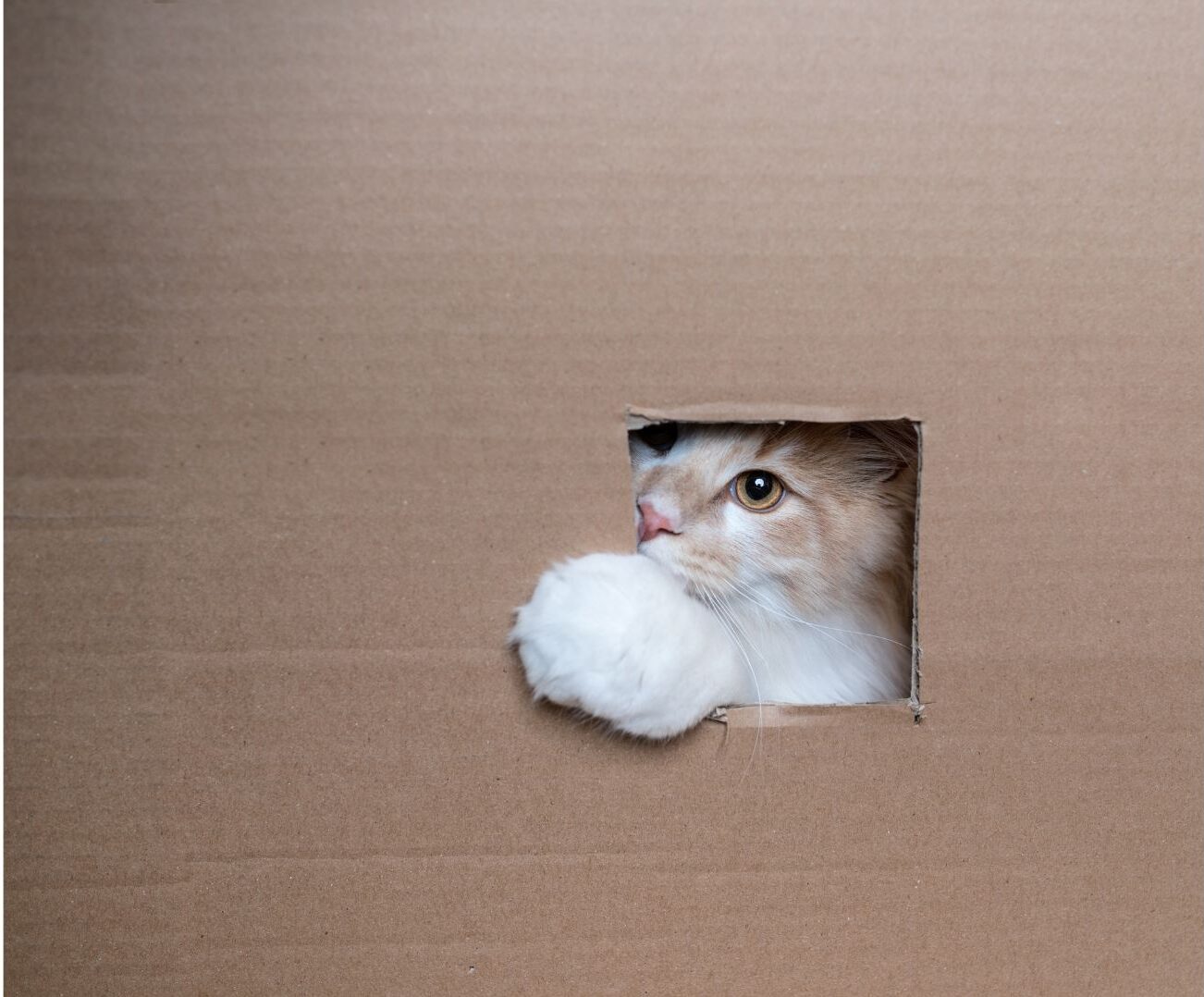
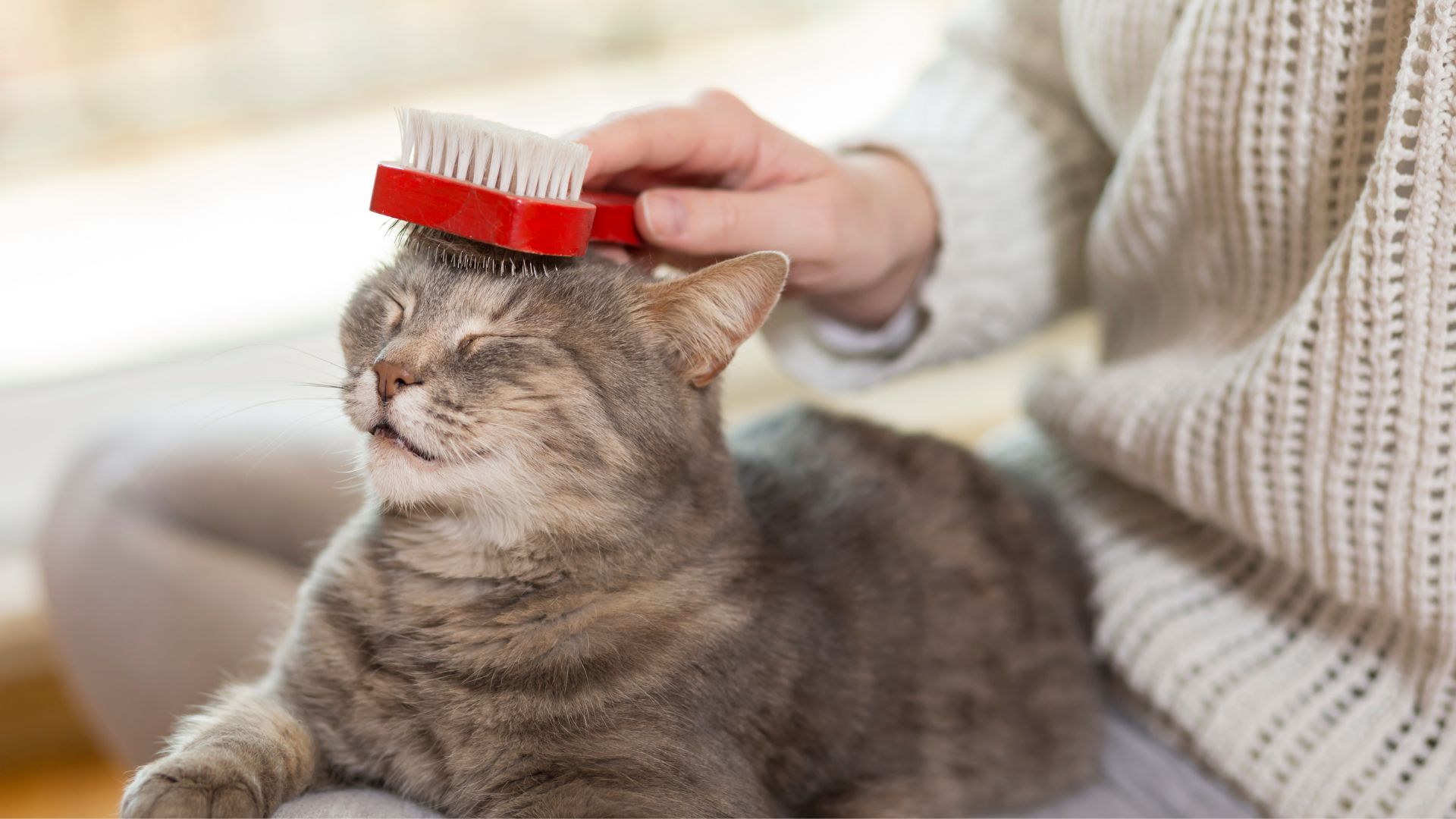
Note that some cats need breaks from physical touch. Read our blog post on overstimulation in cats to learn how to recognize the signs to ensure a positive experience.
Cats offer much more than companionship—they embody the principles of zooeyia by enhancing our mental and physical health, especially in challenging times like winter. Pairing these benefits with fun activities ensures both you and your cat stay happy and engaged. We always have cats available for adoption, so check them out if you’re ready to embrace the warmth and joy they bring to your home (or multiply it if you already have cats!).
About the Author: Beth Dokolasa is a volunteer for Cat Care Society and serves on the Board of Directors. She is an instructional developer for Natural Grocers and lives in Indian Hills, Colo., with her husband, daughter, and two cats, Techno and Digit.
Resources
Allen, K., Blascovich, J., & Mendes, W. (1998). Cardiovascular reactivity and the presence of pets, friends, and spouses: the truth about cats and dogs. International Journal of Psychophysiology, 30(1–2), 116. https://doi.org/10.1016/s0167-8760(98)90295-1
Anderson, K. L., & Olson, J. M. (2015). The value of a pet in enhancing the quality of life. The Journal of the American Board of Family Medicine, 28(4), 526–534. https://www.jabfm.org/content/28/4/526.long
McConnell, A. R., Brown, C. M., Shoda, T. M., Stayton, L. E., & Martin, C. E. (2011). Friends with benefits: On the positive consequences of pet ownership. Journal of Personality and Social Psychology, 101(6), 1239-1252. https://doi.org/10.1037/a0024506
Stammbach, K. B., & Turner, D. C. (1999). Understanding the Human—Cat Relationship: Human Social Support or Attachment. Anthrozoös, 12(3), 162–168. https://doi.org/10.2752/089279399787000237
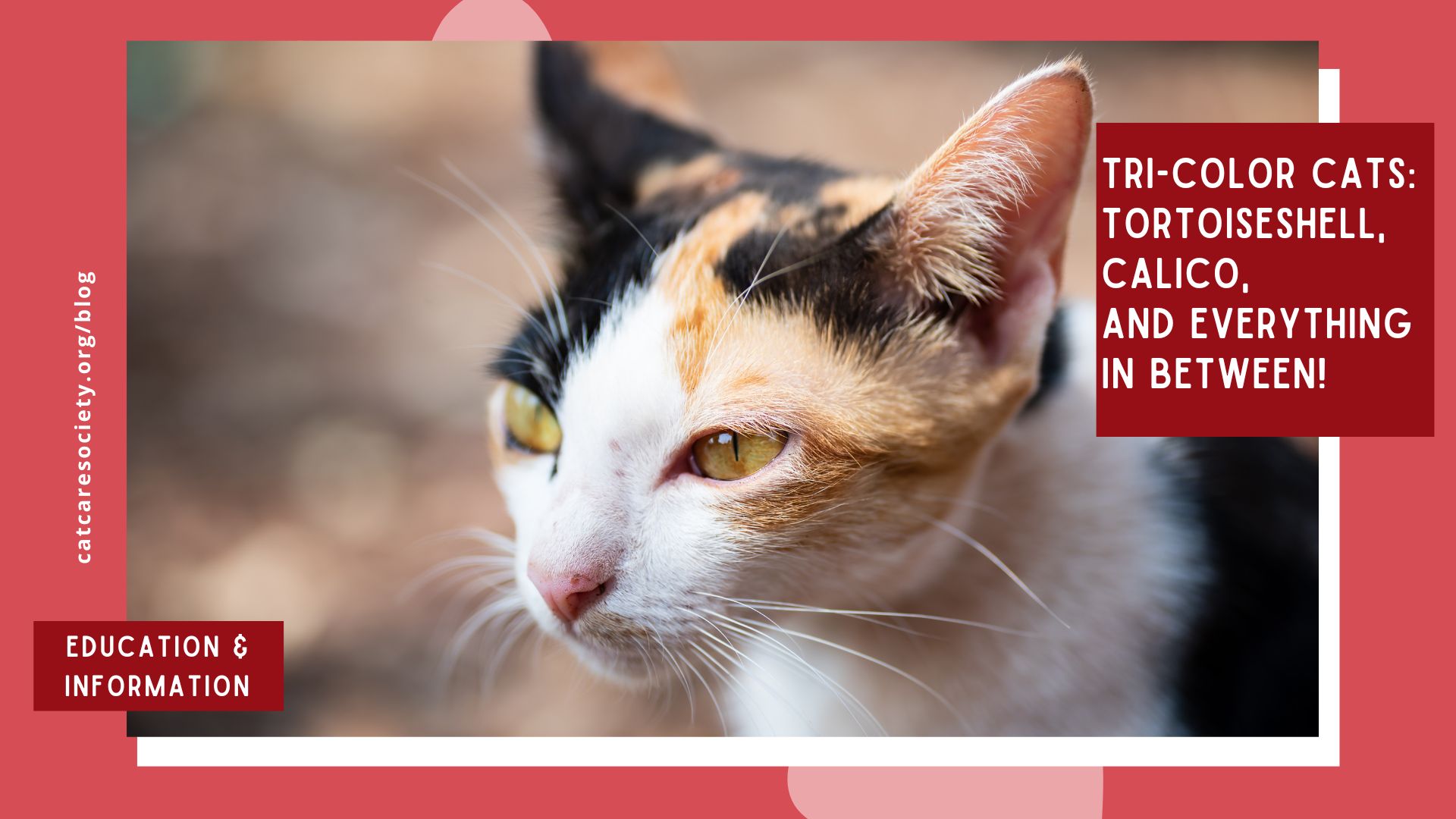
With Halloween approaching, it’s the perfect time to spotlight a particular type of cat—and no, we’re not talking about black cats! Instead, we’re focusing on tri-color cats, whose coats feature a mix of black, orange, and white in varying patterns and ratios. While “tri-color” and “calico” are often used interchangeably, calico cats have a distinct coat pattern. Tortoiseshell cats are also considered tri-color, even though they usually lack white and have their own unique pattern. It’s important to remember that “calico” and “tortoiseshell” refer to coat patterns, not breeds. These color combinations are the result of genetics and can appear in any breed, though they are more commonly found in breeds like American Shorthair, British Shorthair, Japanese Bobtail, Maine Coon, and Persian.
There are also diluted and tabby variations of tortoiseshell and calico cats—so many colorful kitties to love! In the rest of this article, we’ll explore the different markings and patterns that define each type of tri-color coat. By the end, you’ll be able to recognize the unique beauty of every tri-color cat you encounter.
Tri-color cats are almost always female, with approximately one in 3,000 being male. This is because two X chromosomes are needed to have a distinctive tri-color coat. Typically, if a cat has an XX pair, she will be female. Male cats have an XY chromosome pair, so they’re not tri-color unless they have at least one extra chromosome (XXY). Unfortunately, these males often suffer from Klinefelter’s Syndrome, a condition that can negatively affect their health and longevity.
Calico cat coats feature patches of solid orange, black, and white. The white color is a result of a genetic condition called piebalding, which occurs in a range of other domestic and farm animals. In a diluted calico, the colors are more muted to cream, gray, and white, due to a gene inherited from one of the parents that diminishes color intensity.
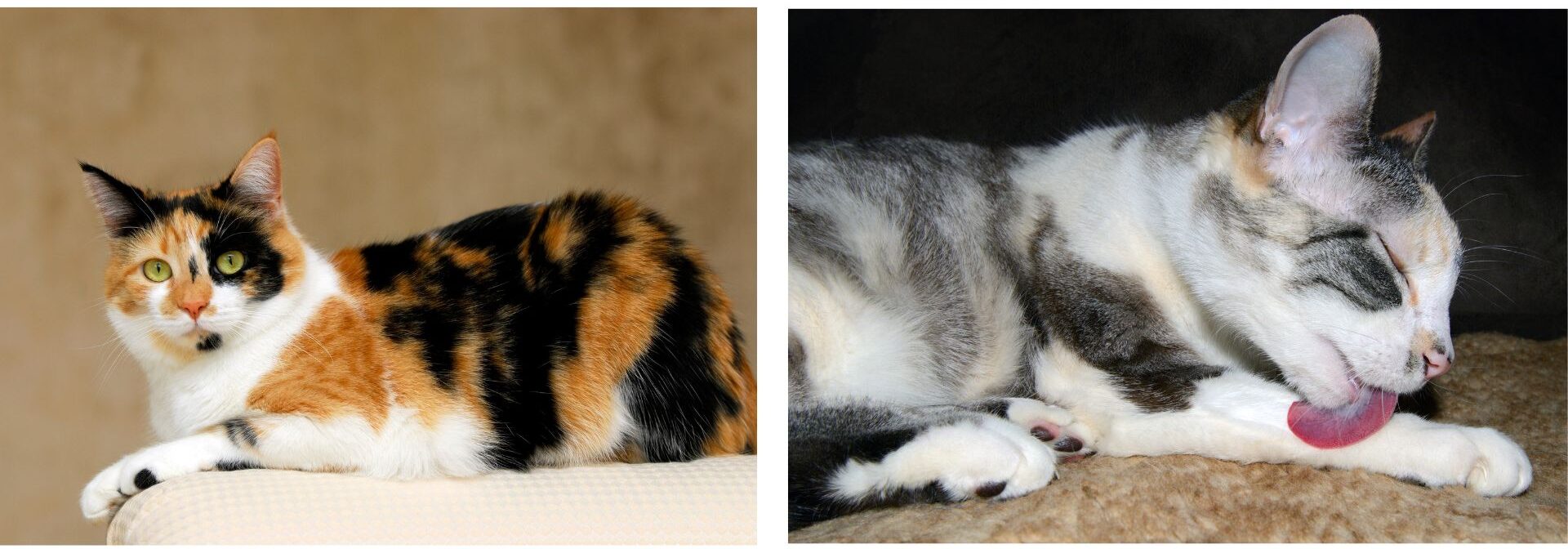
“Tabico” is a term for cats that have a combination of tabby and calico markings. These cats have large patches of orange and black on a white background, with tabby stripes overlaying some of the black and orange areas. When tabby stripes cover the forehead, they form the distinctive “tabby M.” A diluted tabico’s coat features cream, gray, and white fur.
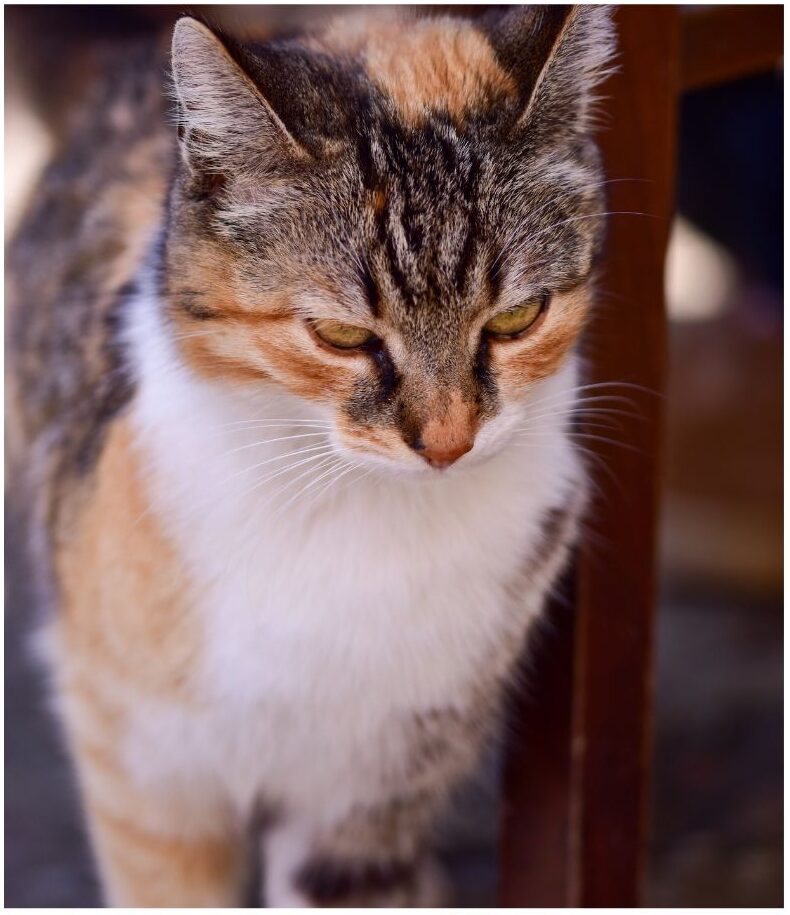
Tortoiseshell, or “tortie,” cats have brindle patterns (irregular stripes or streaks) of orange and black with little to no white. A diluted tortie has gray and cream colors and is a result of both parents carrying a recessive gene that impacts the intensity of the colors.
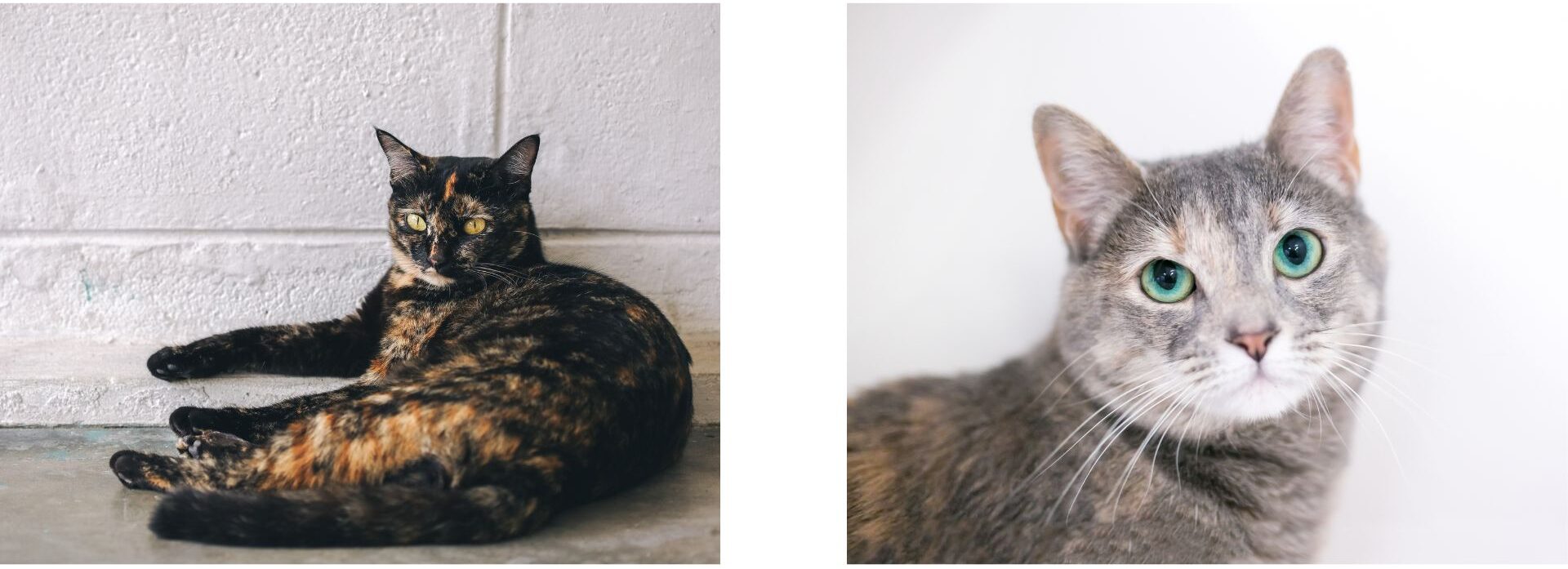
A torbie cat exhibits both the multi-colored brindle pattern of a tortoiseshell cat and the characteristic stripes or spots of a tabby. Like the tabico, if there are tabby stripes on the cat’s forehead, they will display the “tabby M.” Diluted torbies usually have a cream, gray and white coat.
A “tortico” is a combination of classic tortie and calico markings, featuring large patches of orange and black brindling on a white background. A diluted tortico is relatively rare, and will be gray and cream, and white.
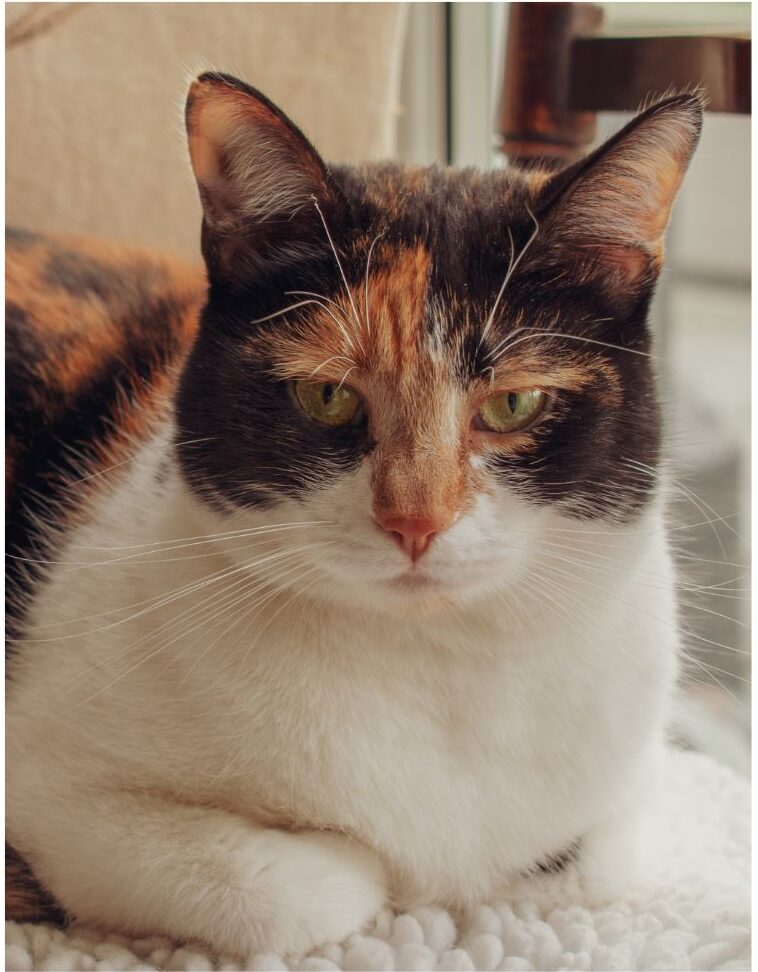
As you can see, there are many variations of tri-color cats but you can still count yourself lucky if you run into one! In many cultures tri-color cats are connected with good luck and good fortune, and in the U.S., they are sometimes called “money cats.”
People who have tri-color cats often report that they’re equally sweet and sassy and tortoiseshell cat owners often refer to their feisty side as having “tortitude.” However, since tri-color cats aren’t a breed, research hasn’t been able to confirm that this extra feistiness is a distinct trait related to their coat pattern. That said, if you haven’t taken our “Whats Your Cat Purrsonality” quiz on our Just Fur Fun page, now’s your chance! Discover which cat breed or color pattern best represents you—maybe even find out if you have a bit of tortitude!”
About the Author: Beth Dokolasa is a volunteer for Cat Care Society and serves on the Board of Directors. She is an instructional developer for Natural Grocers and lives in Indian Hills, Colo., with her husband, daughter, and two cats, Techno and Digit.
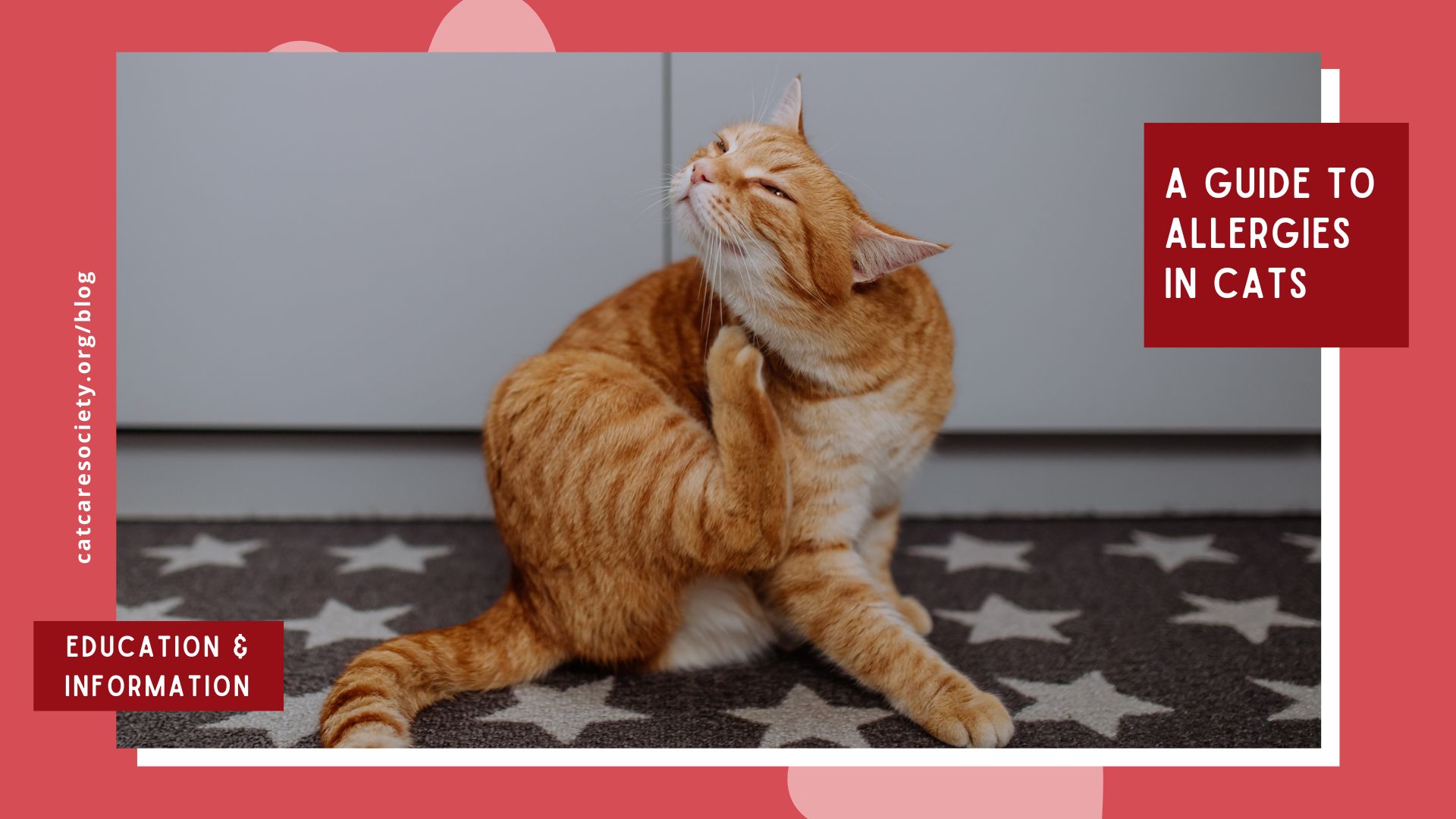
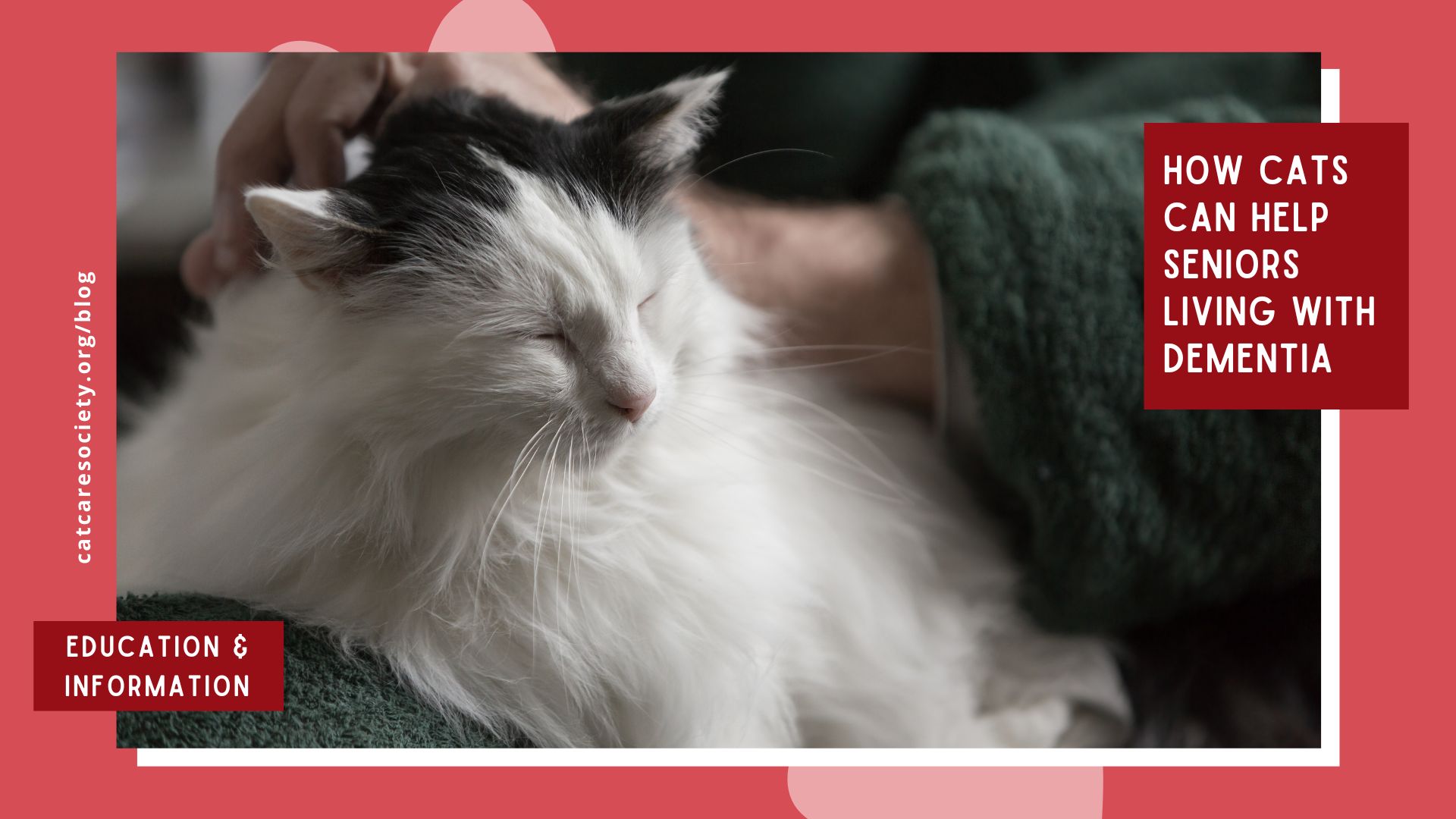
As our loved ones age and experience the challenges of dementia, it becomes increasingly important to find innovative ways to enhance their quality of life. One method that has gained recognition in recent years is cat ownership. Cats, with their gentle presence and calming nature, have been shown to have a profound therapeutic impact on seniors with dementia. Here, we will explore the specific benefits of cat ownership for seniors with dementia and discuss the considerations that come with introducing a feline companion into their lives.
Connecting with animals has long been recognized as a powerful form of therapy for people of all ages. When it comes to seniors with dementia, the benefits of cat ownership are particularly remarkable. Cats offer emotional support and companionship, reduce stress and anxiety, encourage physical activity, enhance social interaction, and even stimulate cognitive function.
The purring sound of a cat can have a calming effect on individuals, lowering blood pressure and reducing the risk of heart disease. The act of petting a cat can release endorphins, the body’s natural feel-good hormones, promoting a sense of well-being and relaxation. This physical interaction with a cat can also help improve motor skills and joint mobility in seniors, contributing to their overall physical health.
Furthermore, the responsibility of caring for a cat can provide a sense of purpose and routine for seniors with dementia, helping to maintain a structured daily schedule. The predictable nature of a cat’s behavior, combined with the warmth and comfort they provide, can create a stable and secure environment for seniors, reducing feelings of confusion and agitation. In essence, the bond between a senior and their cat can be a source of joy and comfort, enriching their quality of life in meaningful ways.
Let’s delve deeper into the specific benefits that cat ownership can bring to seniors living with dementia.
Seniors with dementia experience feelings of loneliness, isolation, and confusion. Cats, with their gentle and comforting nature, provide a constant source of companionship and emotional support. The unconditional love and presence of a feline friend can help alleviate feelings of sadness and fill the void that may have been left by a diminishing social circle.
Dementia is accompanied by heightened stress and anxiety levels, making it crucial to find effective ways to manage these emotions. Cat ownership has been shown to reduce stress and anxiety in seniors with dementia, as the act of petting a cat releases endorphins and promotes relaxation. The soothing rhythmic purring of a cat can have a tremendous calming effect, helping to alleviate tension and create a sense of tranquility.
Maintaining physical activity is vital for seniors with dementia, as it promotes overall well-being and can help delay the progression of cognitive decline. Cats, with their playful and curious nature, provide seniors with engaging stimulation and encourage movement. Activities such as interactive play sessions or simply chasing a laser pointer can help seniors stay active and enhance their physical health.
Social interaction is of paramount importance for seniors with dementia, as it helps combat feelings of loneliness and cognitive decline. Cats act as catalysts for social engagement, providing topics for conversation, and fostering connections between seniors and their caregivers, family members or fellow residents in care facilities. The shared joy and responsibility of cat ownership can create bonds that transcend the limitations of dementia.
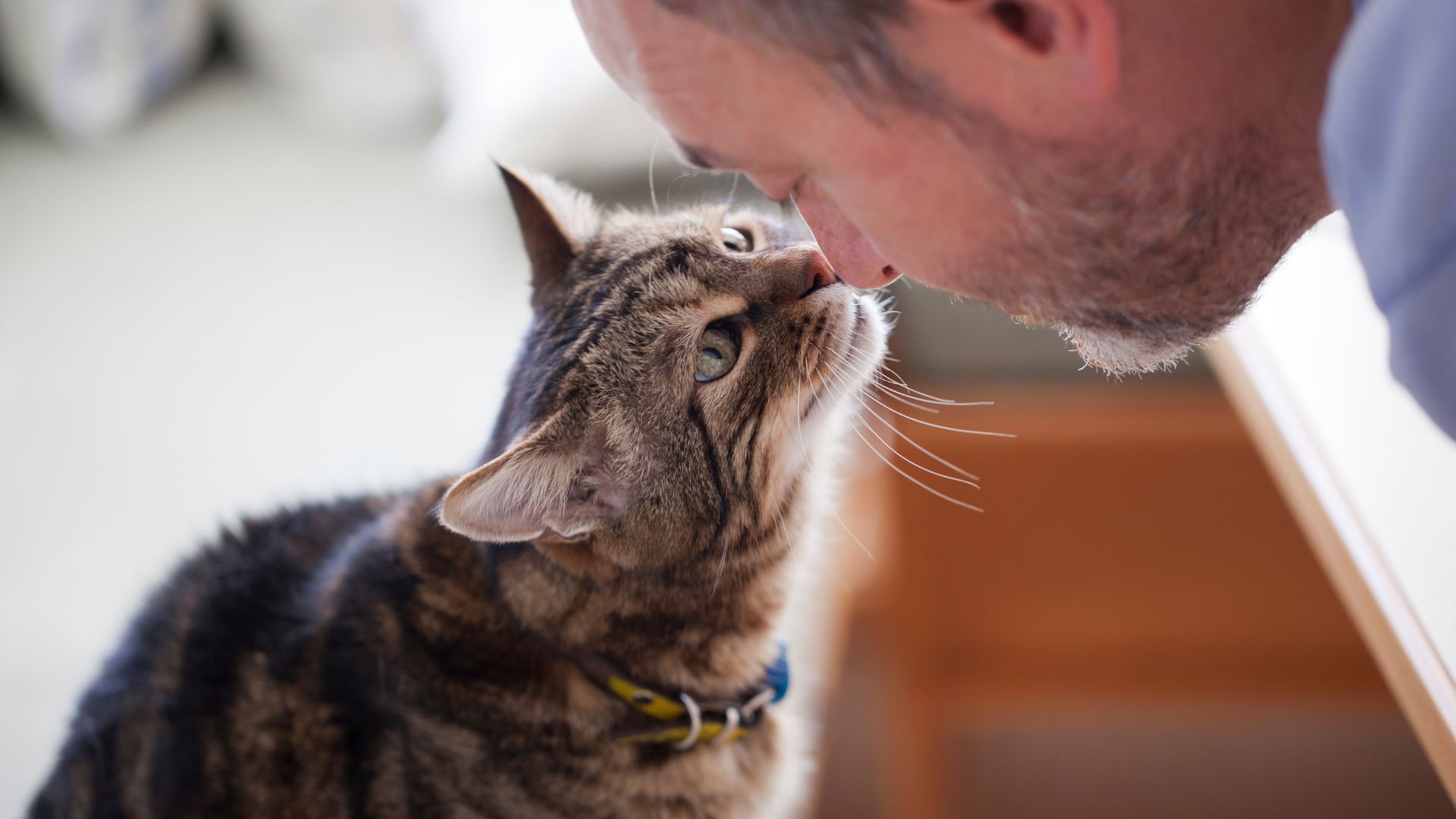
Dementia often leads to a decline in cognitive function, including memory loss and diminished problem-solving skills. Cats provide opportunities for mental stimulation and cognitive engagement. Feeding schedules, grooming routines and interactive play sessions with toys can help seniors exercise their cognitive abilities and keep their minds agile.
Moreover, the presence of a cat in a senior’s life can also have additional benefits that go beyond the direct impact on dementia symptoms. For instance, cats can serve as a source of entertainment and amusement, providing seniors with moments of joy and laughter. Watching a cat play or exhibit their quirky behaviors can bring a sense of delight and light-heartedness to a senior’s day.
While the benefits of cat ownership for seniors with dementia are abundant, it is essential to consider certain factors to ensure a safe and successful integration. Dementia can impact a person’s ability to care for a pet, so family members or caregivers must be prepared to take on the responsibility. Factors such as allergies, living arrangements and the temperament of the cat itself should also be carefully considered.
One important consideration is the age and energy level of the cat. Seniors with dementia may benefit from a cat that is calm, gentle and easy to handle. Older cats or breeds known for their relaxed demeanor, such as Ragdolls or Persians, may be well-suited for providing comfort and companionship to individuals with cognitive impairments. Additionally, it’s crucial to ensure that the cat is up to date on vaccinations and in good health to prevent any potential health risks to the senior.
Furthermore, creating a safe environment for both the senior and the cat is paramount. This includes removing any toxic plants or substances that could harm the cat and ensuring that the living space is free of small objects that the cat could ingest. Providing designated areas for the cat to rest, eat and use the litter box can help establish a routine that benefits both the pet and the senior. Additionally, regular veterinary check-ups and grooming sessions can contribute to the overall well-being of the cat and enhance the bond between the senior and their feline companion.
In conclusion, the therapeutic impact of cat ownership for seniors with dementia cannot be overstated. Cats offer a unique form of companionship and support that has been shown to improve the quality of life for individuals grappling with cognitive decline. From emotional comfort to physical stimulation and cognitive engagement, the benefits of having a feline companion extend far beyond simple pet ownership.
About the Author: Mary Anne Roberto is the co-founder of Always Home Connected and a dedicated CNA and PAC Certified Independent Consultant, specializing in dementia care. One of her goals is to create awareness about those experiencing cognitive changes and to provide caregivers with resources and tools that are necessary to help alleviate some of the challenges caregivers face on a day-to-day basis.
This post was authored and edited according to Cat Care Society’s editorial standards and style. Opinions expressed may not necessarily reflect that of CCS.
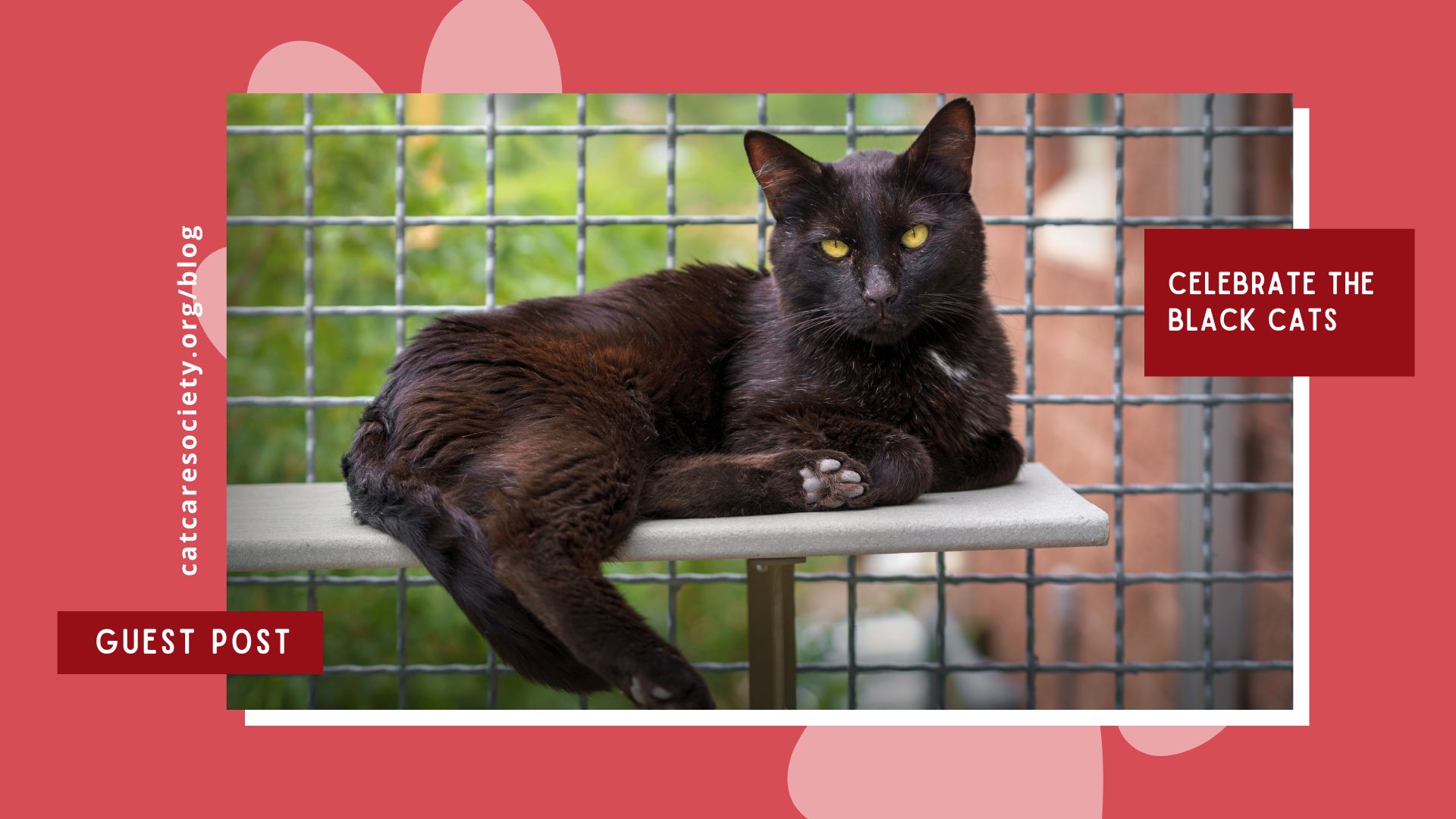
By Kathy McChesney, board member
I sit here now admiring the beauty of my latest “rescue” cat. Panther is one of our favorite cats, and he is solid black. Three of our cats are black, and they are all beautiful, delightful family members.
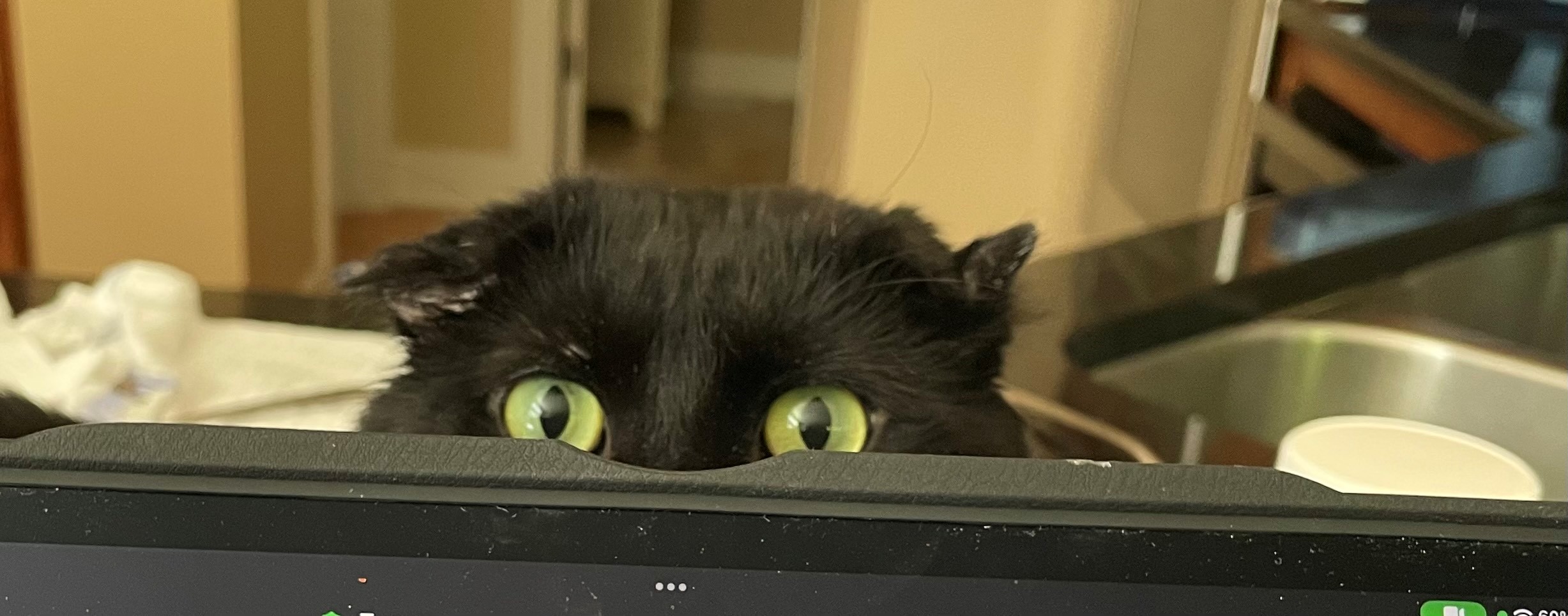
Why do we have so many black cats? I have always loved all cats, regardless of color, so I was surprised to learn that some people avoid taking in black cats. This fact first became apparent to me years ago in Texas when I found a litter of 12-week-old kittens, one of which was black. The multi-colored kittens were quickly adopted into good homes, but no one seemed to be interested in “Blackie.” We already had a house full, so I contacted a reputable cat shelter. I was surprised to hear that they would not take in a black kitten! They told me that black cats were simply too hard to place. It turned out to be my good fortune, as Blackie became a cherished addition to my family.
When I started my own cat rescue years later, I discovered that what I had been told was true. Black kittens and cats were far less likely to be adopted than others. We once took in a group of 20 kittens, born from feral cats. Within a couple of months, we found homes for 18, but were left with two sweet, adorable black kittens who are still with us today. While there is some dispute, the statistics do seem to support that my experience is the norm. See National Library of Medicine, Coat Color and Cat Outcomes in a US Urban Shelter, as well as The Truth About Black Cats.
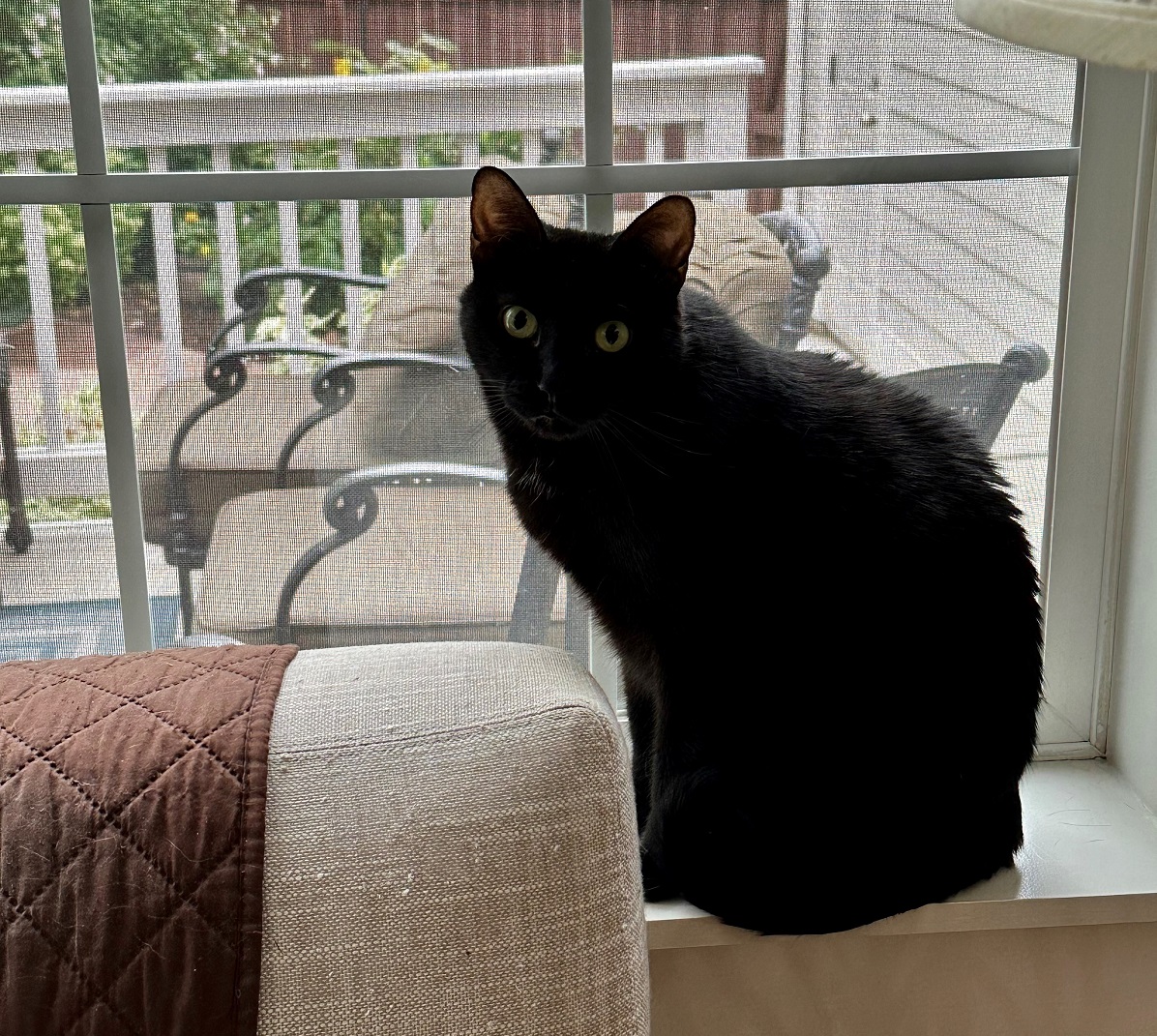
Why are black cats adopted less often than others? Apparently, many people, particularly those who tend to be superstitious, view black cats as more aggressive, less friendly and less adoptable than other cats. Studies reveal the bias stems from superstitions and difficulty of reading facial expressions of black cats.
Black cats are not scary. They are beautiful, sweet, sociable, playful and quite expressive. I can attest that my black cats have brought me nothing but good luck, love and joy.
October is Black Cat Awareness Month, so let’s all celebrate these special kitties! As part of our celebration at Cat Care Society, we will be offering reduced adoption fees on black cats and kittens. While you might have heard some myths creating fears of adopting out black cats during the Halloween season, research has shown that ceasing adoption of black cats during this time actually does more harm than good, because it increases their time in shelters.
There is zero evidence that placing black cats for adoption before Halloween puts them at risk.
The key to keeping cats safe is finding them good homes. Cat Care Society has a thorough adoption screening process to ensure that every cat — no matter what color — finds a safe and happy forever home.
So come to Cat Care Society and take advantage of the celebration! I promise that the addition of an ebony cat or kitten will bring you years of joy!
About the Author: Kathy McChesney is a board member for Cat Care Society, serving since 2022. She is a retired airline pilot and attorney, and founded an animal rescue in Texas in 2014.
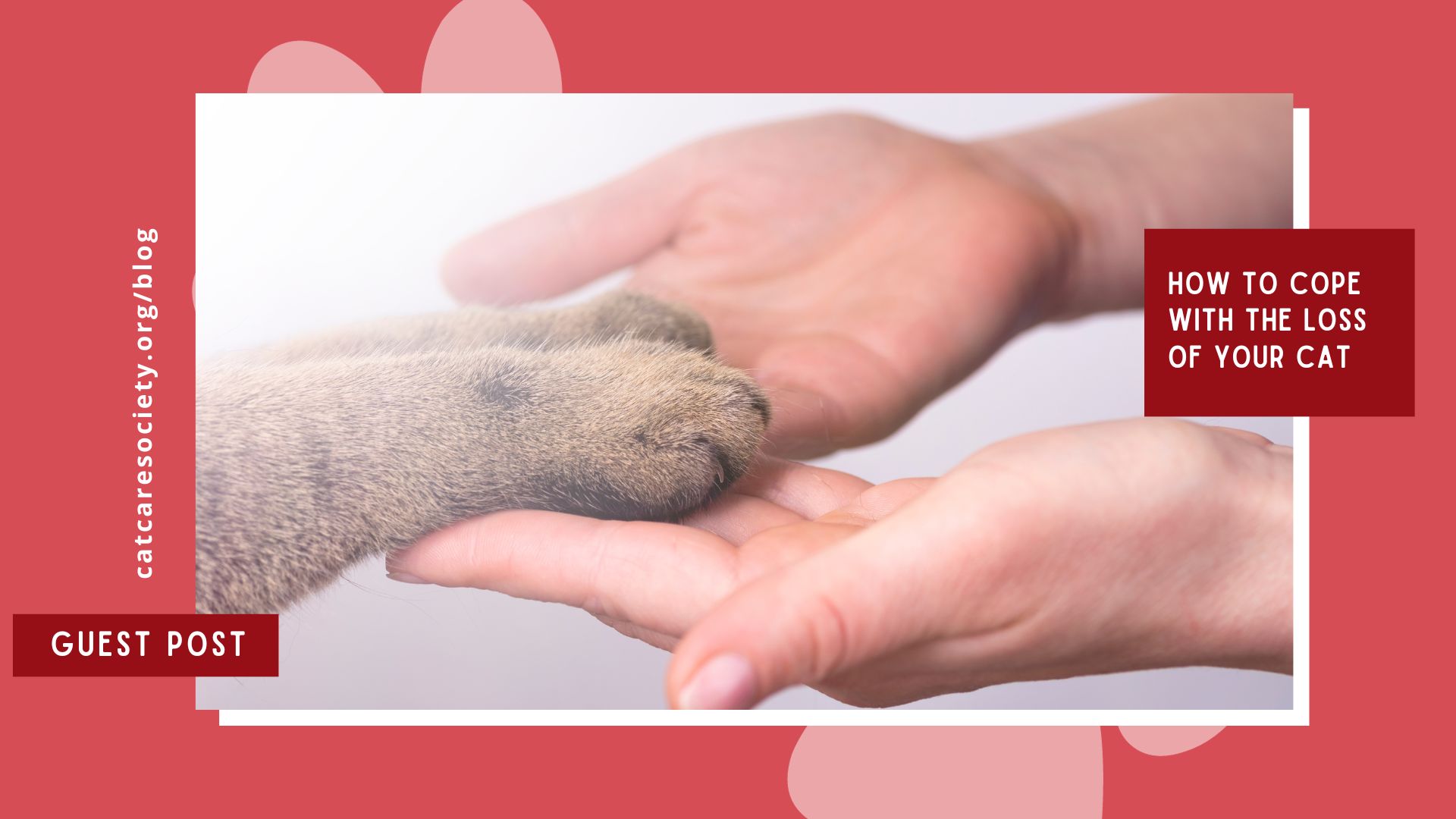
By Desiree Argentina, CCS foster and adopter
The death of your cat can be one of the most devastating losses you will ever face. It can be just as difficult or even more so than the loss of a human family member. The loss of your beloved cat can be extra hard to deal with because they are by your side every day and love you unconditionally. They bring you joy and keep you laughing with their silly antics.
The loss of your cat can be distressing and overwhelming. It’s completely normal to feel a range of emotions including sadness, anger, guilt, shock, disbelief and despair. You may even experience physical symptoms. Common physical symptoms associated with grief include stomachaches, headaches and fatigue.
It doesn’t matter if your cat was with you for 20 years or just a few months. The loss is still just as real and painful. Losing your cat is extremely difficult and can cause indescribable grief. You deserve the time and space to grieve the loss of your best friend.
Many times, we know the passing of our precious feline is in the near future. Whether you are watching your cat get older or they have a heart-wrenching diagnosis, losing your cat is just as painful if it was expected. This is called anticipatory grief. It’s the feeling of grief experienced before the impending loss.
Anticipatory grief is just as valid as the grief experienced after the loss. Even with anticipatory grief, many find themselves unprepared for the grief they feel before losing their beloved cat, and they may find it difficult to express their grief, especially when their beloved kitty is still with them. Anticipatory grief is a very valid and real part of the grieving journey. It is OK to grieve though your pet is still with you. Everything in this article also applies to anticipatory grief.
The first few days after your cat passed away may be the hardest. You may feel like you are in a daze, unable to think clearly or concentrate on anything else. You may find yourself crying randomly or feeling anxious or restless without your furry best friend by your side. You may even feel numb or detached from your surroundings. All of these reactions are completely normal and to be expected.
It’s important to give yourself time to grieve. This is a normal process and can be helpful in healing from the loss. The grieving journey is different for everyone, but there are ways to cope with the loss of your beloved cat. If you’re dealing with the grief of losing your cat, read on for some ways to help.
Allow yourself to feel all of your emotions, even ones you may not expect.
Journal about your cat and your feelings. Writing about your cat and the loss can help you to process your emotions and put words to the difficult emotions you are experiencing.
Do something creative to express your feelings. You can draw, craft, make a collage, scrapbook, write a song or a poem. Using your creativity is a great way to process and express your grief in a healthy way.
Reach out for support. Continue reading to learn different ways you can gain support through this difficult time.
One of the best ways to express your grief is by honoring your best friend. Here are some ideas for different ways you can honor or memorialize your sweet kitty.
You may need a little extra support through this difficult time and there is no shame in that. Sharing your feelings about your pet’s death with others who understand can help you feel less alone in your grief journey and allow you to connect with others who share similar feelings. Ask for help from friends and family members who’ve gone through similar experiences. The more support you have from other people who understand what you’re going through, the more you will be able to express your grief.
Here are some ways that you can seek support through this devastating time:
If you find that your grief is so overwhelming that it interferes with daily life, consider talking with a mental health professional about how to cope.
You must take care of yourself through this difficult time. Practicing self-care and being gentle with yourself while maintaining your physical and emotional health is so very important. Here are things you can do to take care of yourself through your grief journey:
Cats are family. Losing your furry best friend is a devastating loss and the grief can be debilitating. It’s important to express your feelings of grief and to seek support. Be gentle and patient with yourself. Losing your cat is devastating. Remember that you gave your cat the best life you could have and they knew how much you loved them.
When you are ready, consider adding another pet to your home.
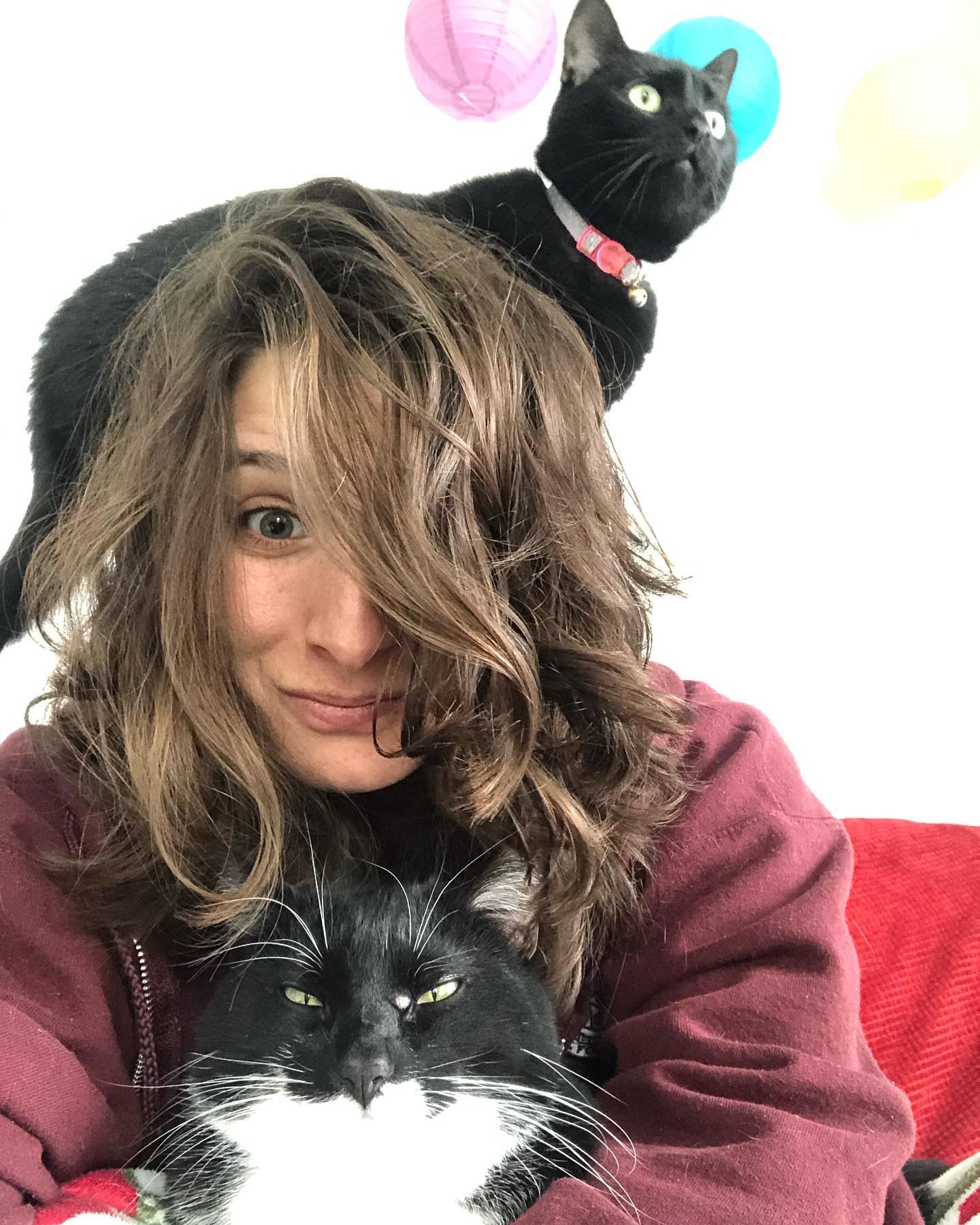
About the Author: Desiree Argentina is a mental health therapist, podcast host and crazy cat lady with an Etsy shop. Desiree fosters cats as well as does TNR (trap neuter release) in the community to help decrease the stray cat population. Desiree has three of her own cats (two of which she fostered and then adopted through Cat Care Society). She recently lost her elderly cat, LeeLee at the age of 17. Desiree is passionate about the human-animal bond and educating others on the benefits that animals can have on our mental health and overall well-being.
This post was authored and edited according to Cat Care Society’s editorial standards and style. Opinions expressed may not necessarily reflect that of CCS.
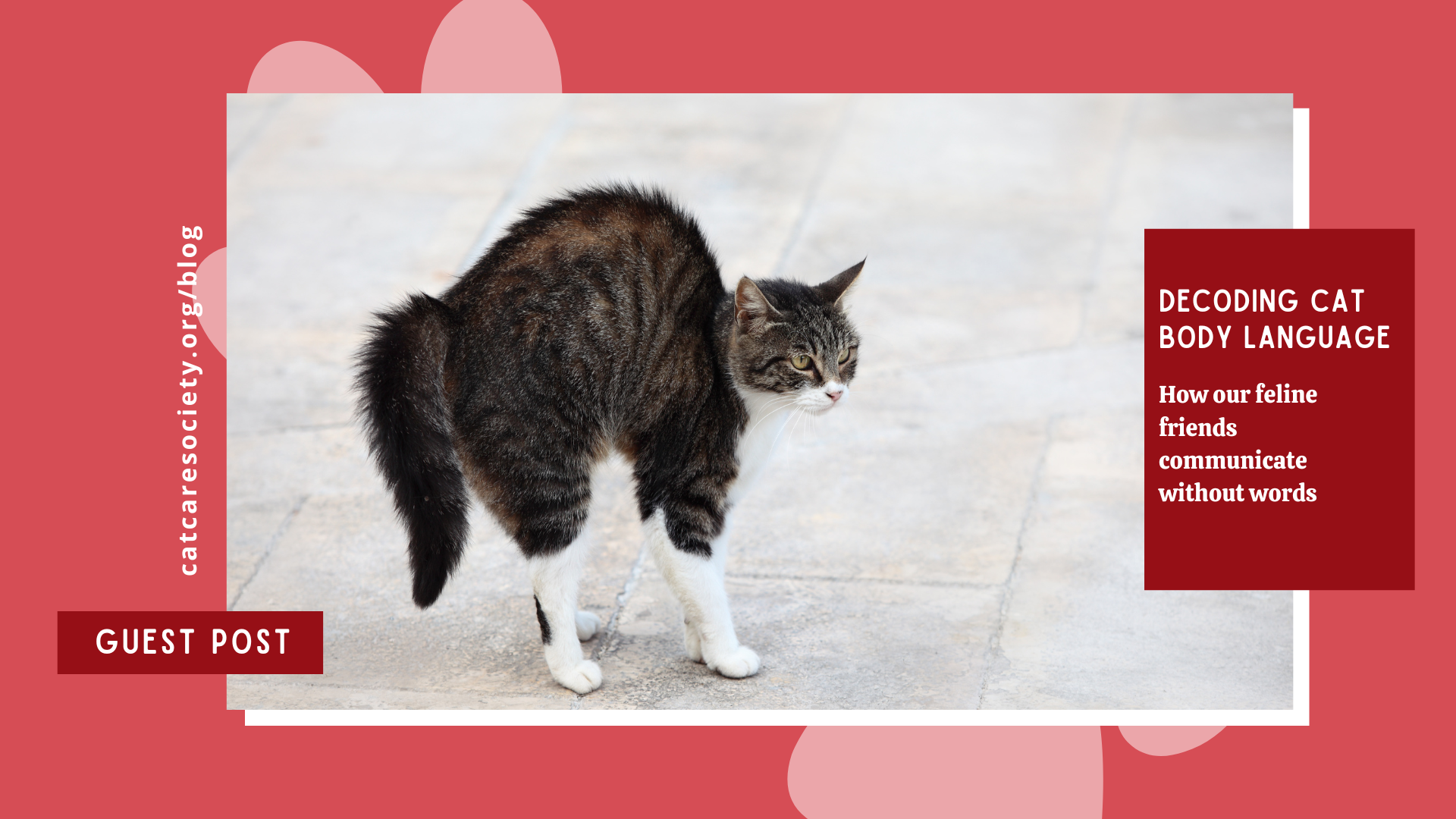
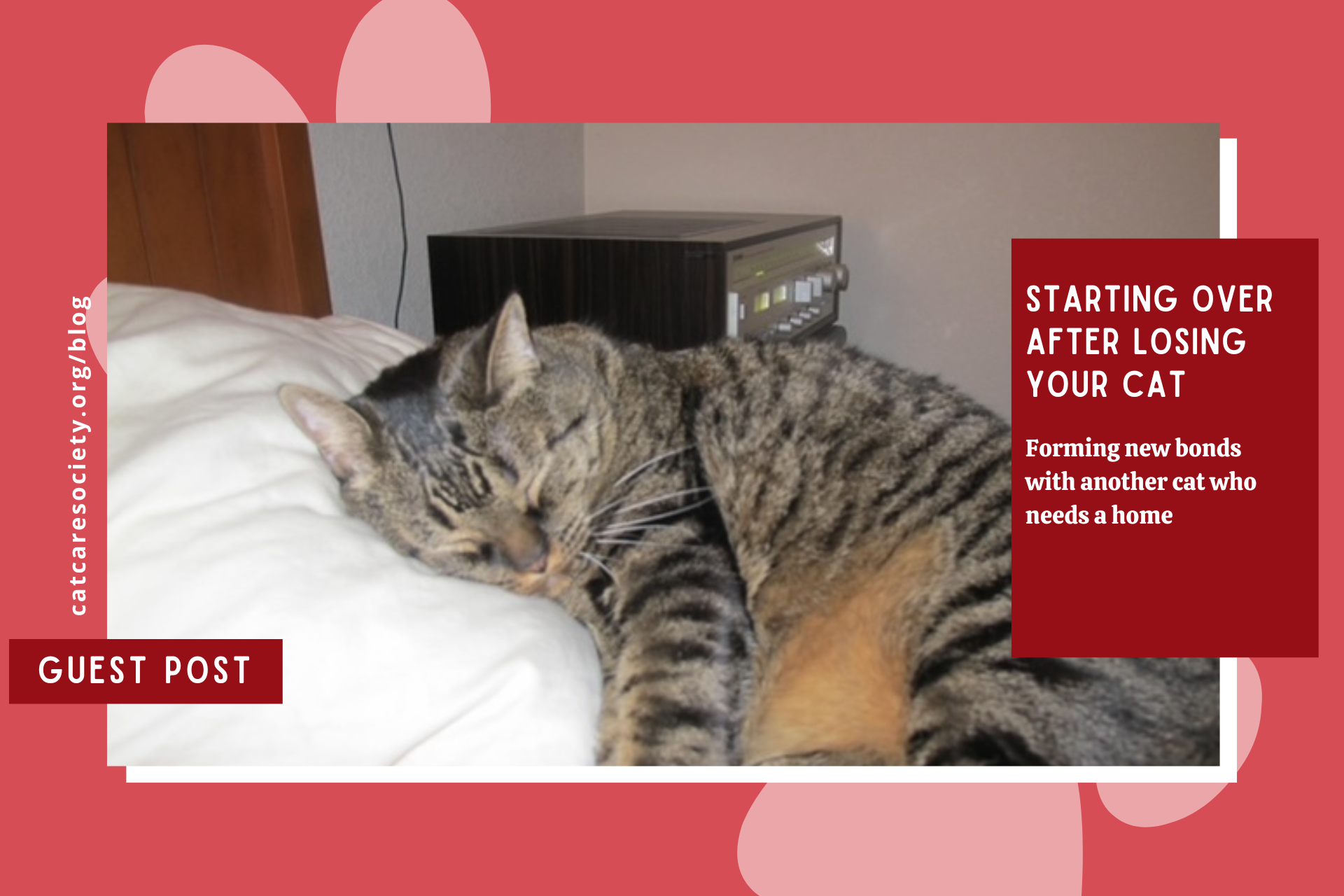
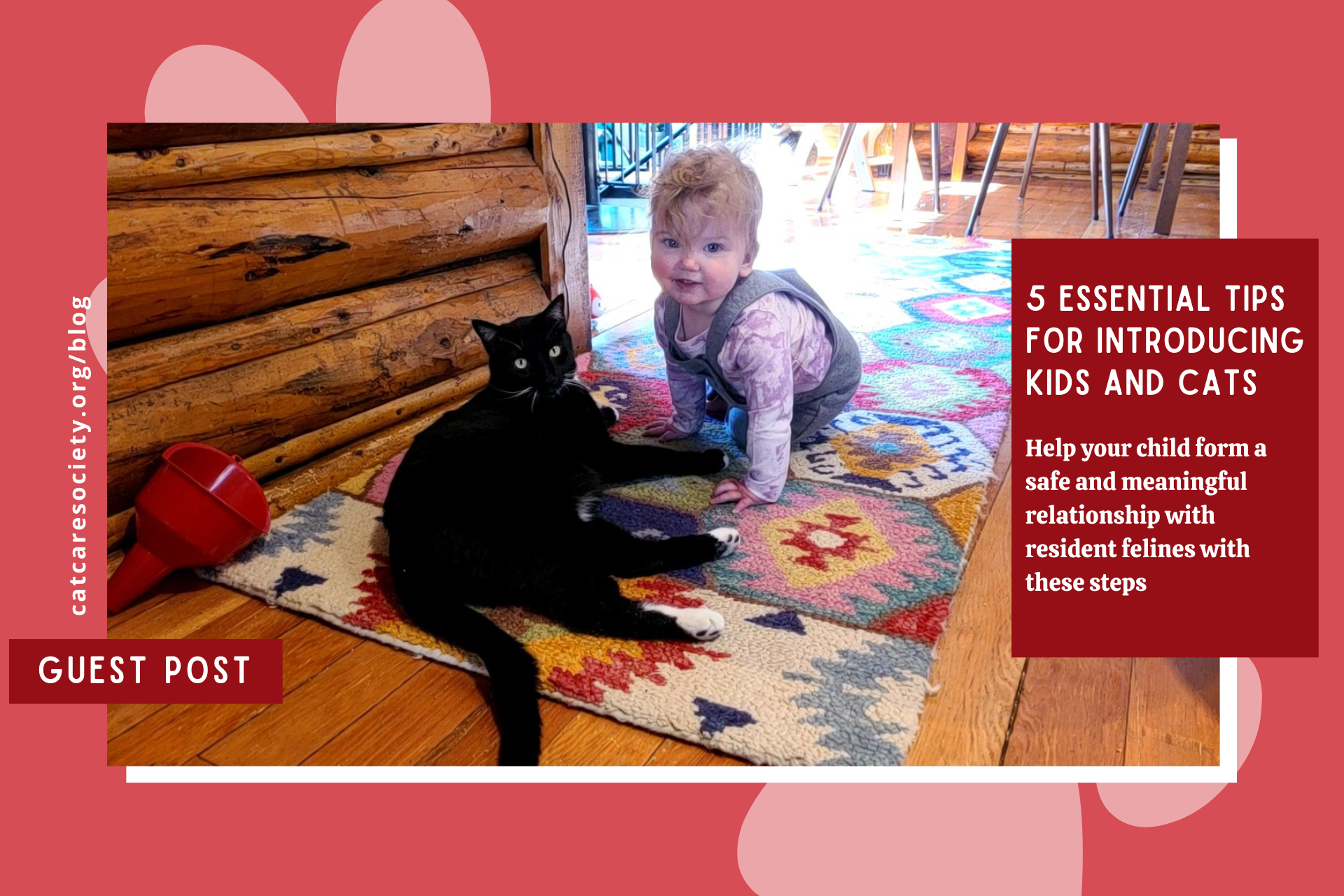
Children and cats have the potential to become purrfect companions. Cats can teach children valuable life lessons about responsibility, empathy and respecting boundaries. Likewise, a child can become another trusted human for the cat, providing a cuddly lap to sleep on. However, it is crucial to plan a new introduction with care to ensure a pawsitive experience for both. In this article, we will explore essential tips for introducing children and cats so that they can foster a strong bond in a safe and harmonious environment.
The first and most important step in introducing children to cats is teaching the child to respect the cat’s boundaries. Explain that cats have their own personal space and may not always want to be cuddled or played with. Every cat will have his or her own unique preferences for contact and interactions. Demonstrate how to approach the cat calmly and let the feline initiate contact. Additionally, ensure the cat always has a designated place to retreat, if needed. Teaching respect for boundaries ensures that both the child and the cat feel comfortable and safe in each other’s presence.
Understanding cat behavior is key to a successful introduction. Educate your child about common feline behaviors such as purring, tail flicking and ear movements. Explain that cats use body language to communicate their feelings and emotions. This knowledge will help your child interpret the cat’s signals, leading to better interactions and a deeper understanding of their feline friend’s emotions.
Supervision is crucial, especially for young children. Encourage your child to sit quietly and let the cat approach at their own pace. Plan to keep the interaction short at first, and if the cat’s body language begins to show signs of overwhelm, tell the child that the cat needs a break or some time alone. Gradually increase the duration of interactions as both the child and the cat become more comfortable with each other’s presence.
Young children are naturally curious and want to touch new things around them, especially things that move, including swishy cat tails, but this can sometimes lead to rough handling. It is important to teach your child how to handle a cat gently and with care. Demonstrate the proper way to pet a cat, emphasizing avoiding sensitive areas like the belly or tail. Encourage soft strokes and provide positive reinforcement when the child shows gentle and respectful behavior toward the cat.
If the child starts playing rough with the cat, such as pulling a cat’s tail, ears or whiskers, firmly tell them to stop and redirect them on how to pet gently. It’s important to intervene, even if the cat seems unbothered, because you don’t want the child to assume that all cats are comfortable with rough play.
Involving children in the care of the cat fosters a sense of responsibility and strengthens their bond. Assign age-appropriate tasks to your child, such as feeding, grooming or playing with the cat using interactive toys. Supervised play allows children to understand the cat’s natural instincts and provides an outlet for their energy. However, always supervise young children during these activities to ensure the safety of both the child and the cat.

That’s OK! There are some remedial steps you can take to ensure a more successful reintroduction. The following tips may also be useful for first introductions, especially if you’re working with a child or cat who are known to be slow at warming up to new situations.
Introducing children to cats can be a delightful and enriching experience. By teaching respect, understanding and responsibility, you can help foster a strong and loving bond between your child and their feline friend. Remember to supervise initial interactions, encourage gentle handling and involve children in cat care. By following these guidelines, you’re setting the stage for a lifetime of companionship and cherished memories between the child and cat.
If you’re considering welcoming a new cat into your home, we invite you to explore Cat Care Society’s current adoptable cats, as well as our foster program. And, don’t forget to read more blog posts for additional resources on creating a safe and comfortable home for your feline friends.
About the Author: Beth Dokolasa is a volunteer for Cat Care Society and served on the organization’s junior board. She is an instructional developer for Natural Grocers and lives in Indian Hills, Colo., with her husband, young daughter, and two cats, Techno and Digit.
This post was authored and edited according to Cat Care Society’s editorial standards and style. Opinions expressed may not necessarily reflect that of CCS.
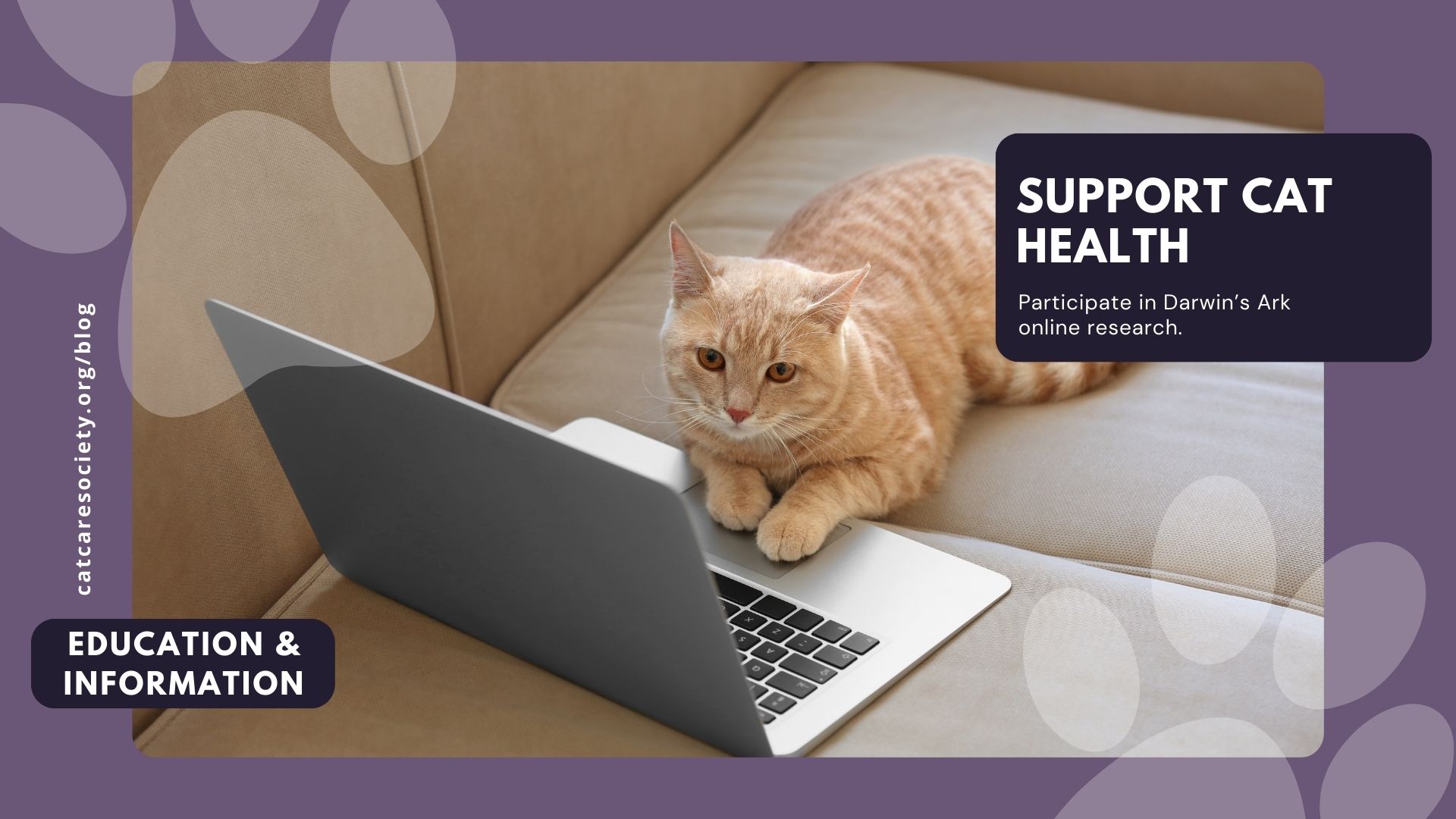
Let’s be honest—if you’re reading this, we probably don’t need to tell you how much joy cats bring into our lives. You already know the comfort of a purring cat in your lap, the entertainment of zoomies, and the simple calm of a cat sunbathing in a window. Cats are family.
But even though they’ve stolen our hearts (and our favorite spots on the couch), there’s still so much we don’t understand about their health. That’s where research comes in—and your participation can help in uncovering the mysteries behind feline wellness.
The health and wellbeing of cats often get overlooked in comparison to other pets like dogs. While research into canine health has flourished over the years, we’re only beginning to scratch the surface (pun intended) when it comes to understanding the unique needs and medical conditions of cats. From chronic illnesses like feline diabetes and kidney disease to behavioral issues such as anxiety and aggression, there are still many unanswered questions about what causes these conditions and how to best treat them.
To improve the lives of cats everywhere, we need more research. By deepening our understanding of how cats experience illness, aging, and stress, we can develop better treatments, prevention strategies, and care—helping them live longer, healthier, and happier lives.
One exciting initiative that aims to fill this gap in feline research is Darwin’s Ark, an online platform started by two pet lovers, a geneticist and an engineer, to advance scientific understanding of pet health. The website is an invaluable resource for anyone passionate about improving the lives of both dogs and cats through data-driven research.
For our purposes, we’re focusing on cat health, and at its core, Darwin’s Ark is about collecting and analyzing data from real cats living in homes, shelters, and other environments. The goal is to create a comprehensive database that researchers can use to study genetic and environmental factors that influence cat health. By gathering data on everything from a cat’s breed and genetic makeup to its medical history and behaviors, Darwin’s Ark provides vital insights that can shape future research.
The beauty of Darwin’s Ark is that it allows cat owners and shelters alike to play an active role in research. By participating in the program, you’re contributing valuable information that could lead to breakthroughs in veterinary science. Here’s how you can get involved:
The research conducted through Darwin’s Ark has the potential to change the way we think about feline health. By looking at the genetic and environmental factors that influence cats’ lives, researchers can gain a better understanding of how diseases like cancer, heart disease, and even infectious illnesses develop in cats. This information will help veterinarians make more accurate diagnoses, prescribe better treatments, and ultimately improve the lives of cats.
But it’s not just about medical conditions. Research into feline behavior and mental health is equally important. Many cats suffer from anxiety, depression, or stress, often due to changes in their environment, lack of stimulation, or inadequate socialization. By understanding the root causes of these behavioral issues, we can develop strategies to create happier, more well-adjusted cats who can thrive in their homes.
Additionally, shelters can use the findings from these studies to provide better care for cats in their care. Whether it’s understanding how to better treat sick cats, providing more enrichment opportunities, or improving the adoption process, data-driven research will help shelters give cats the best possible chance at a healthy and fulfilling life.
In the grand scheme of things, supporting research into feline health is about more than just helping individual cats—it’s about ensuring that all cats, everywhere, can live longer, healthier lives. The more we know, the better we can protect and care for our kitty companions, whether they’re our beloved pets at home or shelter cats.
For more information or to get started, visit Darwin’s Ark today and be sure to check out their fascinating blog article on why cats are so understudied. By supporting platforms like Darwin’s Ark, we take a step toward making a tangible difference in the lives of cats, promoting better health outcomes, and advancing our understanding of these extraordinary animals. Every small contribution counts—whether it’s participating in research, sharing the word, or making a donation. Let’s work together to ensure that all cats can live their best lives.
About the Author: Beth Dokolasa is a volunteer for Cat Care Society and serves on the Board of Directors. She is an instructional developer for Natural Grocers and lives in Indian Hills, Colo., with her husband, daughter, and two cats, Techno and Digit.
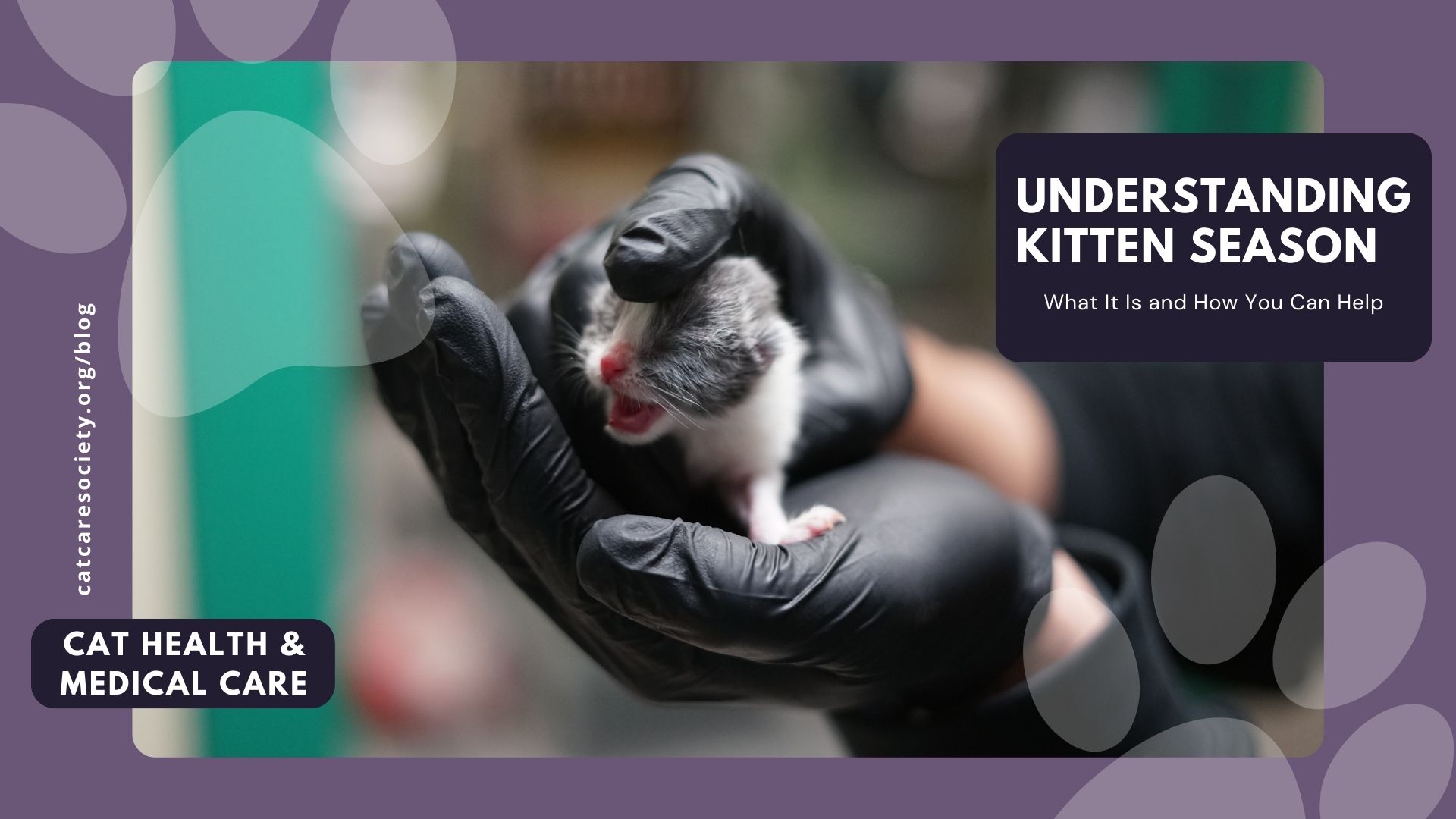
If you love cats, you may have heard the term “kitten season” before—but what exactly does it mean? Kitten season is the time of year when shelters and rescues typically receive an influx of newborn kitten litters as well as their mothers. This surge in cats can create challenges for pet shelters, but with the right knowledge and support, everyone can play a part in helping shelters, ensuring the well-being of the cats, and finding them a loving home.
Kitten season typically occurs from early spring through late fall, with a peak in the warmer months. During this time, unspayed female cats go into heat more frequently and have the potential to give birth to multiple litters, with an average of 4-6 kittens born per litter. This can really add up! Many of these kittens are born outdoors to feral or stray cats and end up in shelters or on the streets.
While kittens are undeniably adorable, the large number arriving at shelters during kitten season creates a high demand for resources like medical care, food, and space. In Colorado, kittens cannot be adopted until they are two months old so shelters are providing lots of long term care for them! Shelters and rescue organizations work tirelessly to care for these kittens and their mothers, but they often face challenges like overcrowding and foster home shortages.
Foster homes help address space shortages but they also play a crucial role in keeping all cats healthy. Kittens don’t yet have a fully developed immune system or GI tract making them more vulnerable to catching and spreading illnesses, which can further overwhelm the shelter and impact other cats. Kittens do not begin to receive illness preventing vaccines until they are at least four weeks of age. Additionally, kittens require frequent monitoring, socialization, and specialized care, which can be challenging for shelters managing many animals at once. Foster caregivers help by providing individualized attention, ensuring kittens receive the care they need to grow strong and healthy before adoption.
To reduce the number of kittens in shelters and ease the ongoing pressure on resources, shelters also focus on spaying mother cats, preventing future litters. This helps break the cycle of overcrowding and ensures that shelters can better meet the needs of all the cats in their care. With community support—through fostering, adoption, and other forms of assistance—we can give every kitten the best chance at a healthy, happy future.
There are many ways you can make a difference during kitten season. Whether you’re able to adopt, foster, volunteer, or support from afar, every effort counts. Here are some suggestions:
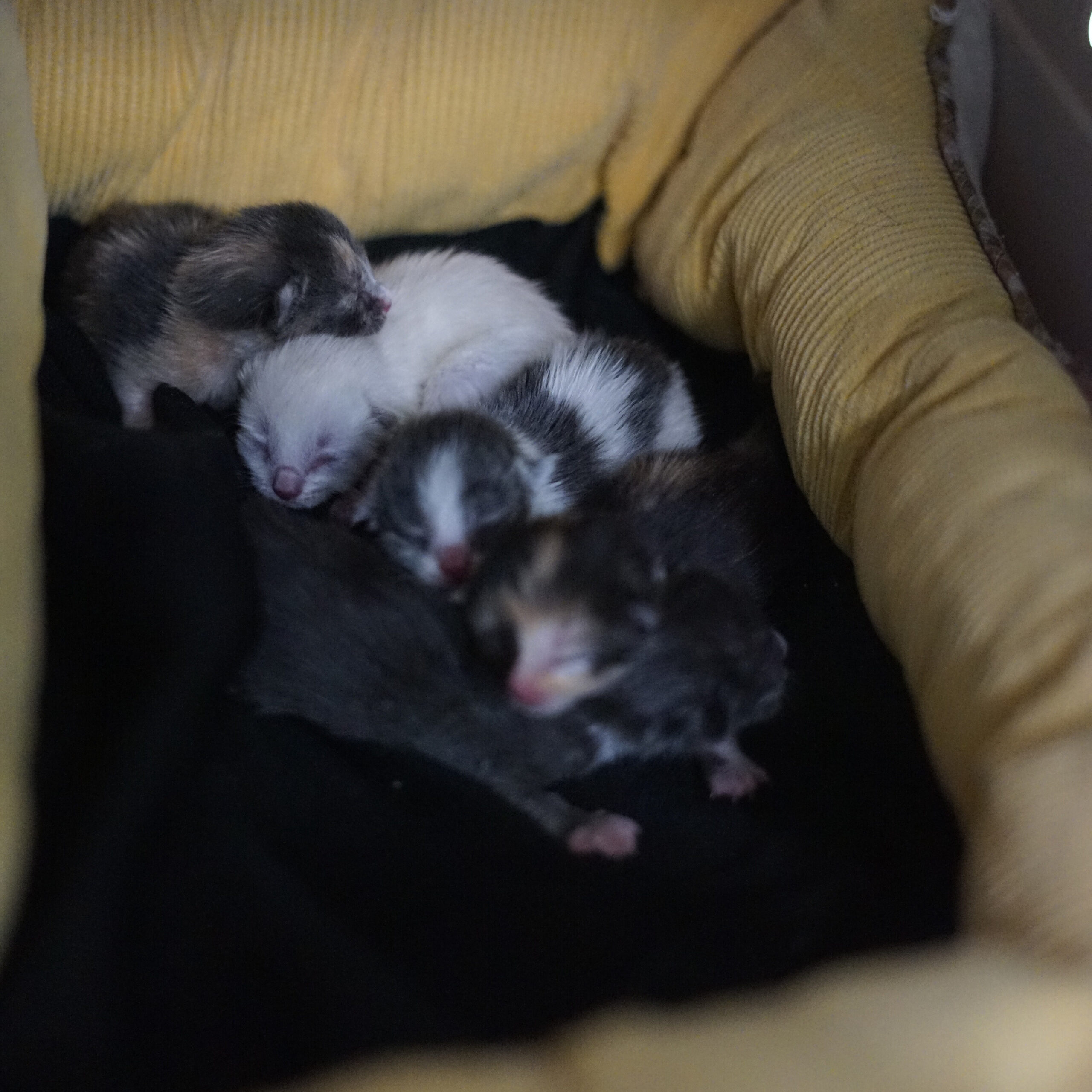
Many shelters and rescues rely on foster homes to care for young kittens
who are too small to be adopted. These kittens need a safe and loving environment where they can grow, socialize, and receive proper medical care. Fostering is a rewarding experience and saves countless lives. Learn more about being a foster with Cat Care Society and apply online.
Preventing unwanted litters starts with responsible pet ownership. Ensure your own cats are spayed or neutered, and encourage friends and family to do the same. We have a resource list of lost-cost clinics that can help make this more accessible. Encourage your friends and family to read more about the benefits of spaying and neutering your cats in one of our other blog posts.
If you’ve been thinking about welcoming a cat into your family, kitten season is an ideal time to adopt. Shelters are overflowing with kittens and adult cats looking for homes. We also suggest adopting two kittens at the same time so they can continue practicing great behavior habits! By adopting, you’re not only giving a cat a second chance but also freeing up space in shelters for other animals in need. Check out our cats available for adoption!
Cat Care Society has a robust in-house cat socialization and enrichment program, and we also have many great resources to help you bond with your new kitty once it’s home and set up an environment where your cat can play, express their natural behaviors, and thrive!
One of the most effective ways to reduce the number of kittens born on the streets is through Trap-Neuter-Return (TNR). This humane approach involves trapping stray and feral cats, having them spayed or neutered, and then returning them to their outdoor colonies where they have adapted to live. TNR helps stabilize cat populations and prevents future litters from being born. Read more about TNR in one of our other blog posts and check out our list of TNR organizations that provide services in the Denver metro area if you’d like to get involved or need support.
Whether or not you can adopt or foster, there are plenty of ways to make a difference! Here are just a few ways you can help:
EduCATion is key to supporting our cat population—it’s built right into the word! Share information about kitten season, TNR programs, and responsible pet ownership with your community. Social media, local events, and word-of-mouth can all help raise awareness and encourage others to get involved.
Follow us on Instagram, Facebook, and TikTok for helpful, shareable content. Sign up for our email newsletter, aka our Mewsletter, to stay updated on upcoming events, adoptable cats, must-read stories, and ways to support the shelter. We also publish a quarterly print newsletter called Cat Care Quarterly that you can sign up to receive at home for free!
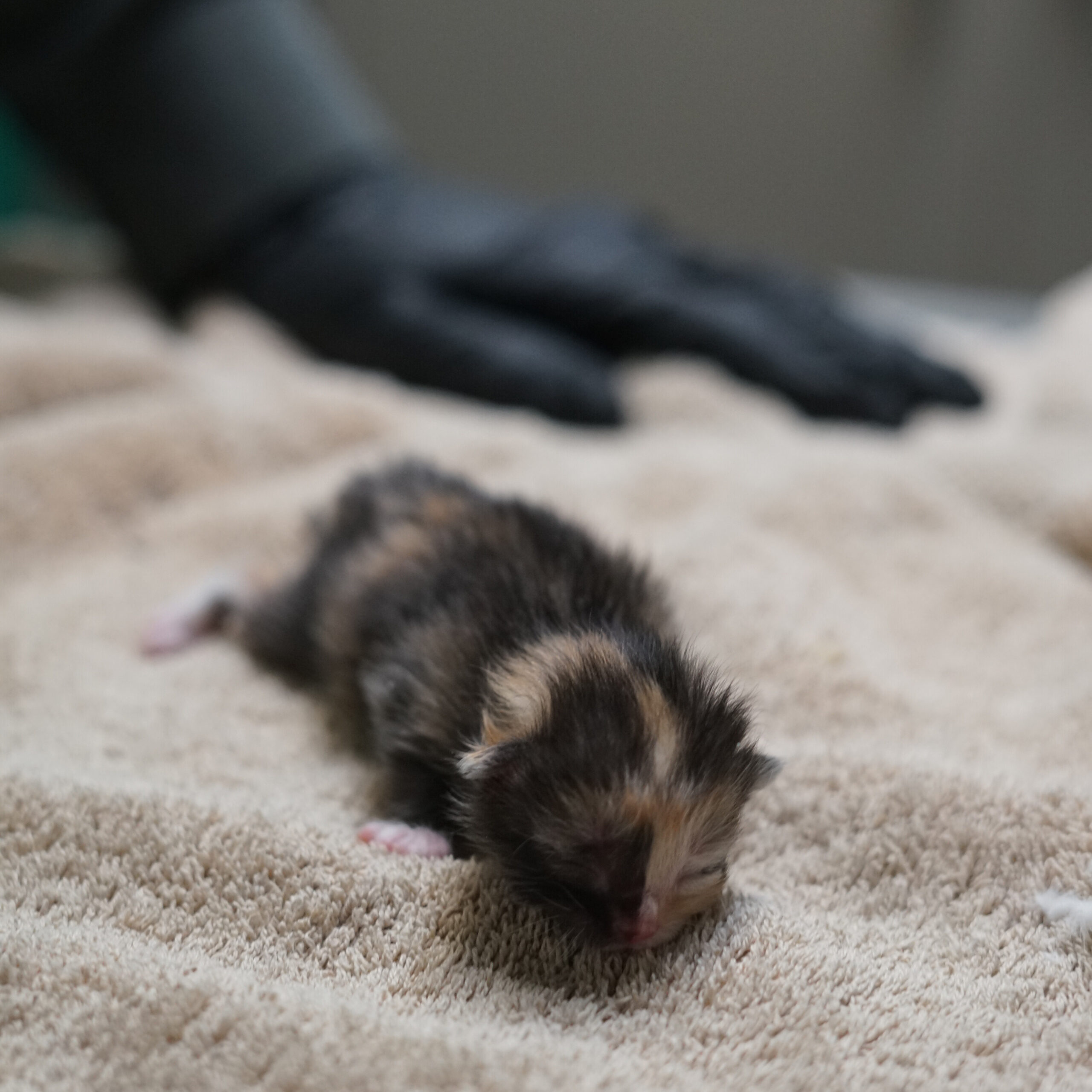
Kitten season is a challenging time for shelters and rescues, but with community involvement, we can help save lives and reduce the number of homeless cats and overcrowded shelters. Whether you open your home to a cat in need, contribute supplies or funds, or simply spread the word, your support makes a meaningful impact. CCS is grateful to all of our supporters, including our dedicated volunteers, fosters, donors, adopters and beyond. Let’s continue working together to give kittens the best start in life and create a brighter, more hopeful future for all cats!
About the Author: Beth Dokolasa is a volunteer for Cat Care Society and served on the organization’s junior board. She is an instructional developer for Natural Grocers and lives in Indian Hills, Colo., with her husband, daughter, and two cats, Techno and Digit.

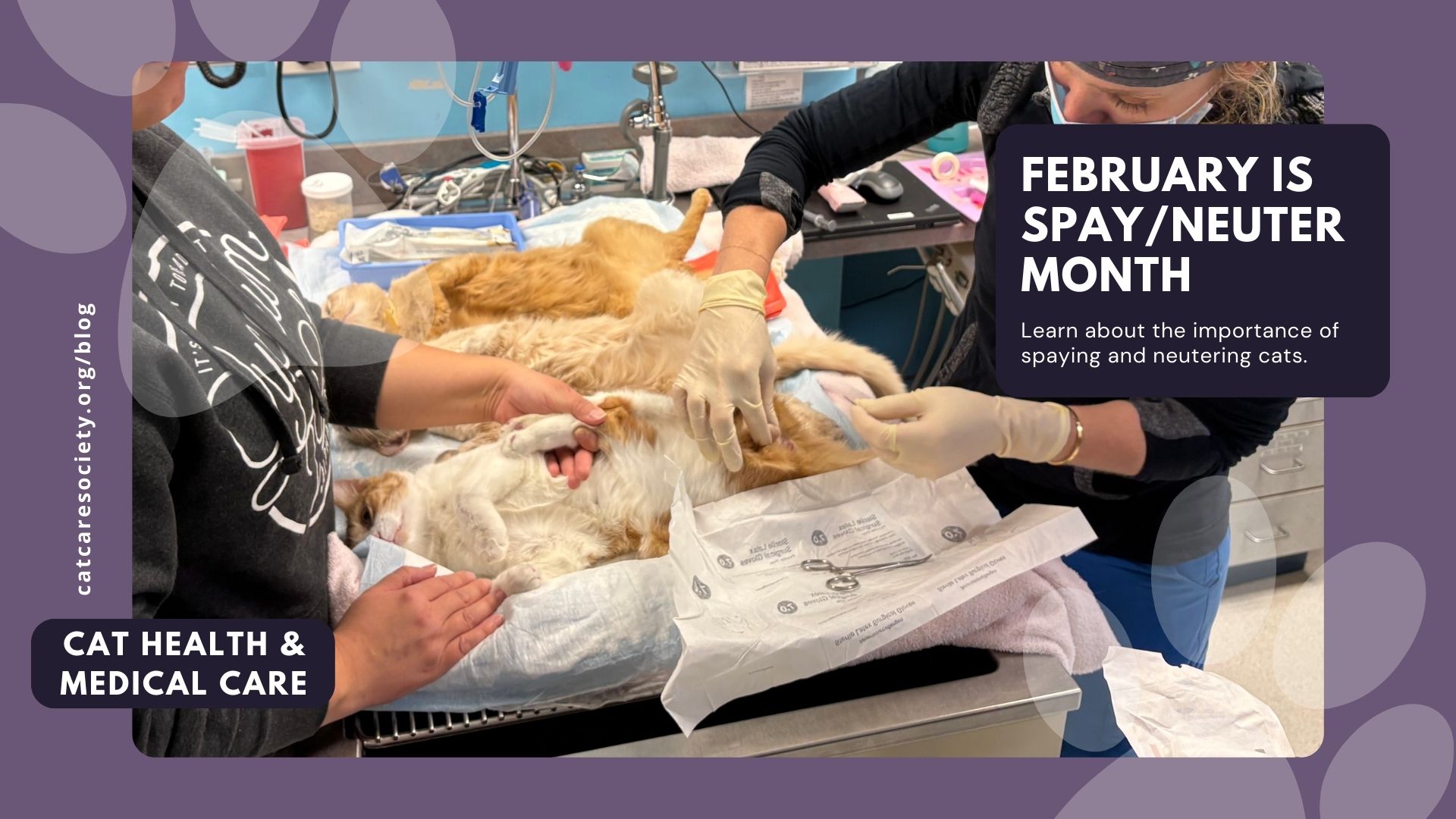
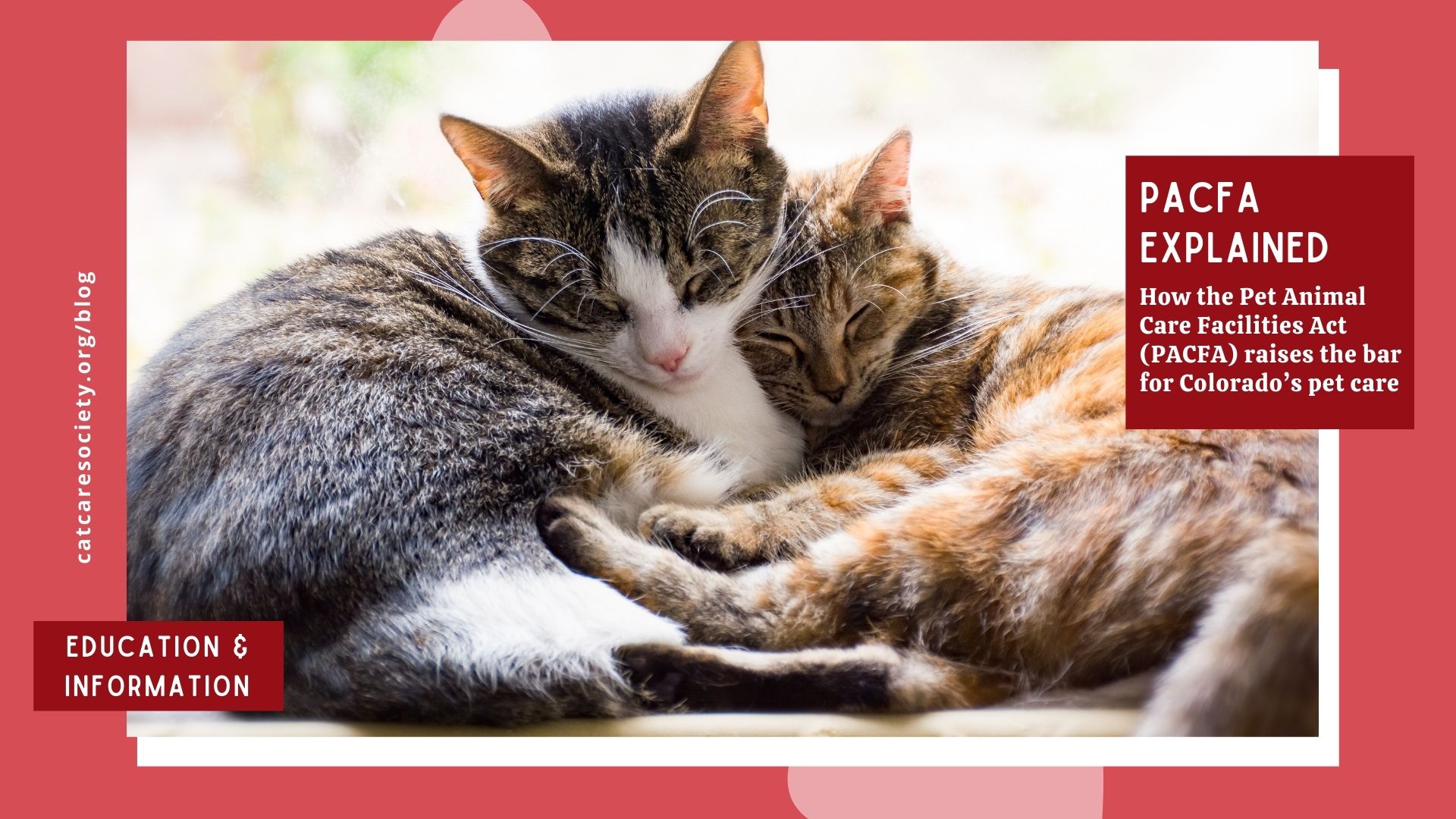
In Colorado, caring for animals isn’t just a calling—it’s a fundamental responsibility governed by the Pet Animal Care Facilities Act (PACFA). Established in 1994, this program protects the health, safety, and welfare of animals in pet care facilities while also protecting consumers who utilize pet-related services.
Whether someone runs an animal shelter (like we do at Cat Care Society!), a pet grooming business, a breeding operation, or a rescue, PACFA requires a license to legally care for animals. This state law sets comprehensive standards to ensure that animals in licensed facilities receive proper care. Through regular updates and inspections, PACFA prioritizes animal welfare, positioning Colorado as a leader in this field. In this article, we’ll explore the broad and comprehensive scope of PACFA, clarify what it doesn’t cover, and explain why it matters for pets and pet owners across Colorado.
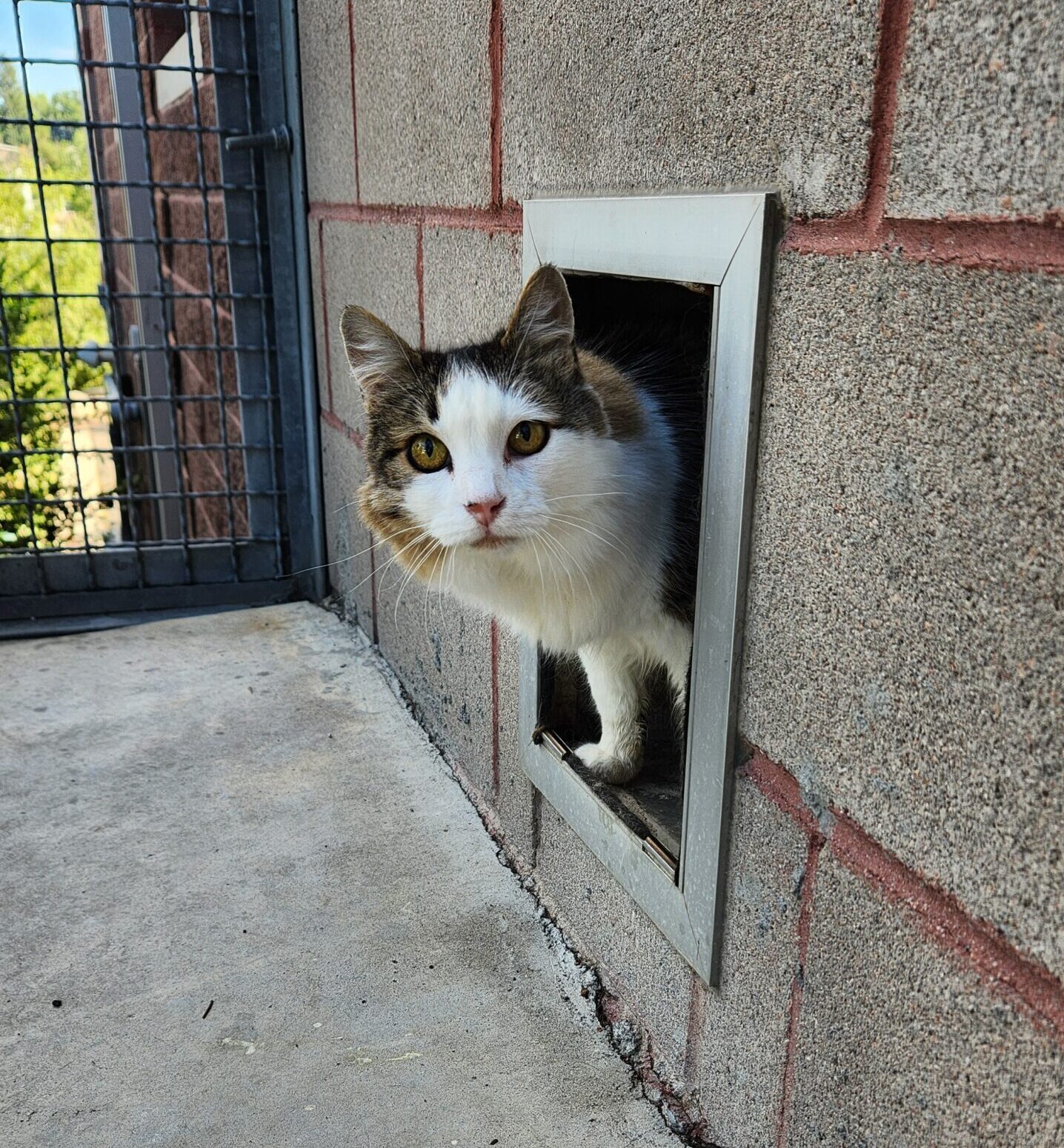
PACFA is Colorado’s state law that regulates companion animal care facilities, ensuring animals receive proper treatment and live in environments where their physical and emotional needs are met. Some animals covered under PACFA include cats, dogs, birds, guinea pigs, mice, rats, hamsters, gerbils, ferrets, rabbits, reptiles, amphibians, and fish.
One of the strongest aspects of PACFA is its comprehensiveness and level of detail. Below are just some of the areas it covers. Note that requirements are individualized based on animal type.
The Colorado Department of Agriculture (CDA) is responsible for enforcing PACFA regulations. This oversight ensures that any organization involved in pet care operates with transparency, accountability, and a deep commitment to the animals in their charge. To earn and maintain a PACFA license, facilities like shelters, rescues, pet stores, and groomers must pass rigorous inspections, meet specific criteria on an ongoing basis, and complete annual reporting.
PACFA’s licensing program isn’t just about paperwork—it’s about safeguarding animal welfare. By maintaining a PACFA license, facilities commit to meeting essential standards for animal housing, health, and safety, all under the enforcement of the CDA. And as these standards are regularly updated, shelters and rescues must stay current, adapting to new regulations that reflect the evolving practices in animal care. Additionally, current PACFA licensees must complete a qualifying continued education every two years to stay up-to-date with PACFA’s standards.
While the terms shelter, rescue, and sanctuary are often used interchangeably, the Colorado Department of Agriculture provides distinct legal definitions for each. The Rules and Regulations Pertaining to the Administration and Enforcement of the Pet Animal Care and Facilities Act (8 CCR 1201-11) specify the classifications for various types of animal facilities. At Cat Care Society (CCS), we operate as a private non-profit animal shelter and do not receive any government funding.
PACFA isn’t animal control or animal protection. Municipal animal control units enforce municipal and state ordinances typically related to private citizen pet ownership, such as dog licensing, leash laws, lost and found, and cruelty/neglect. However, PACFA staff may partner with a local animal control unit if animal cruelty and neglect is discovered.
Additionally, PACFA is required by the state to report animal cruelty and neglect to local law enforcement or the Colorado Bureau of Animal Protection (BAP). BAP conducts outreach and education to prevent neglect and mistreatment of domestic and companion animals in Colorado and follow-up on complaints to help enforce pertinent laws.
PACFA doesn’t oversee licensure of veterinarians or vet techs. The State Board of Veterinary Medicine within Colorado’s Department of Regulatory Medicine regulates and licenses/registers veterinarians and veterinary technicians in the State of Colorado.
Since 1981 Cat Care Society has been committed to a very simple mission: provide cats with the best possible care until they find their forever homes. We fully comply with PACFA’s standards, and our commitment to evolving with the research behind these regulations reflects our ongoing dedication to providing the best possible care for the cats we serve. But we don’t stop there. We believe every cat deserves a safe, loving environment, regardless of age or medical condition.
From individualized care plans to behavioral enrichment programs and our exceptional volunteer and foster teams, we strive to exceed PACFA’s requirements to make sure each cat is living its best life. That includes having a free-roaming environment for our cats and going above and beyond in evaluating older and special-needs cats to determine the best course of treatment and care.
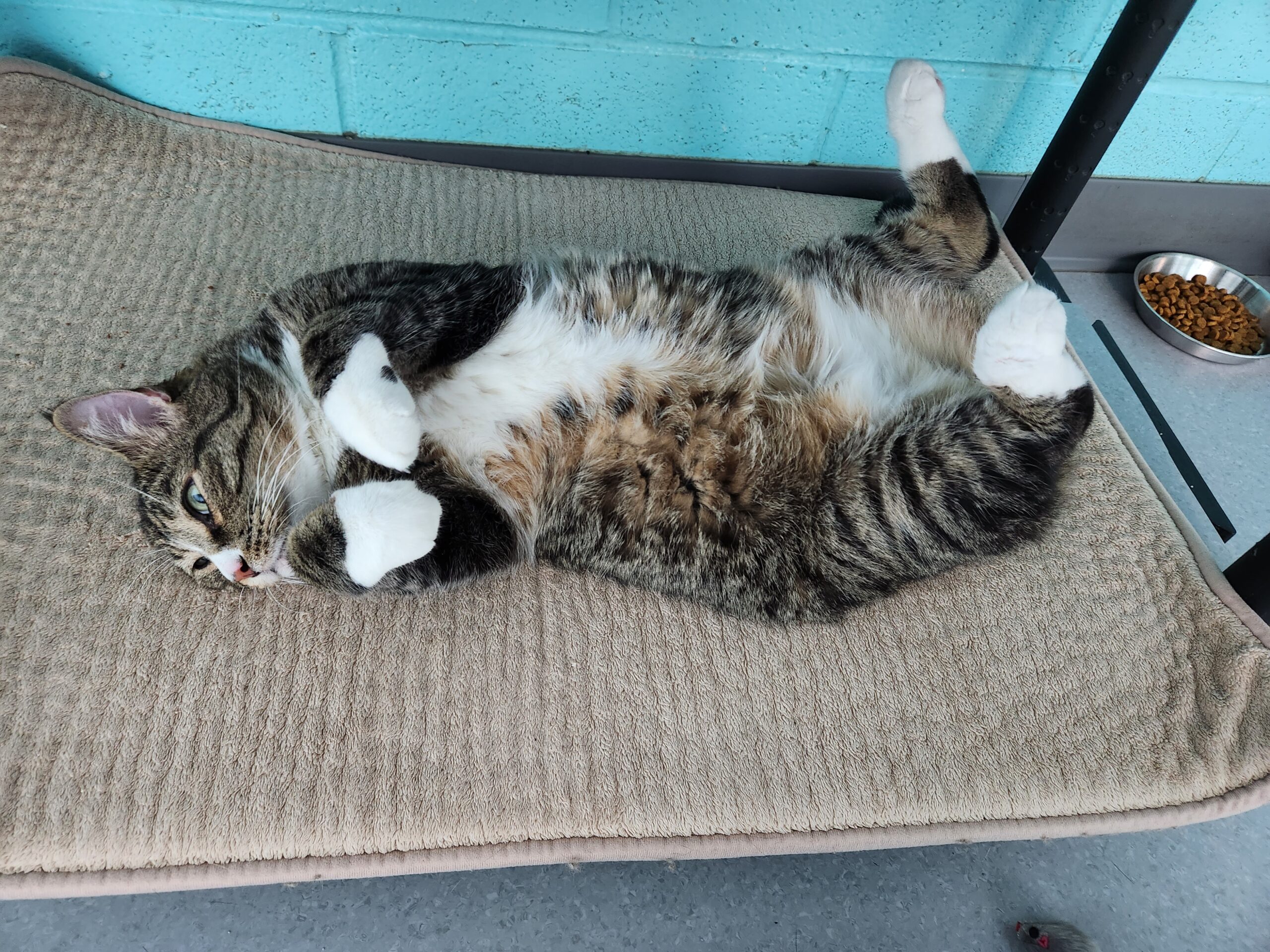
PACFA isn’t just about enforcing rules—it’s about creating a culture of responsibility and compassion across the entire pet care field. By ensuring that everyone in the business of caring for animals meets high standards, PACFA guarantees that every cherished pet gets the attention, safety, and love they deserve.
And at Cat Care Society, we’re all about love—our love for cats and our dedication to upholding the values that PACFA instills. Together, with PACFA’s guidance, we’ll continue to make Colorado a better, safer place for animals, one purr at a time.
We want all animals to be treated with respect and care which is why we encourage you to reference the PACFA Active Facilities List when selecting a pet care service. The CDA also provides detailed information on their website including data, FAQs, and of course, the full PACFA legislation. Here at CCS, we’re committed to transparency, so on our About Us page, you can find details about how we care for our cats, our latest impact report, our strategic plan, and much more! We also offer an extensive list of recommended pet service providers on our Resources page.
About the Author: Beth Dokolasa is a volunteer for Cat Care Society and serves on the Board of Directors. She is an instructional developer for Natural Grocers and lives in Indian Hills, Colo., with her husband, daughter, and two cats, Techno and Digit.

Winter, with its short days and chilly weather, often confines us indoors, making it the perfect season to enjoy the warmth and company of a cat. A field of study known as zooeyia (pronounced zoo-AY-uh) explores the positive impact of human-animal interactions on health, including physical, mental and emotional health. Meaning a cat isn’t just comforting a cozy companion during the colder months, but you share a beneficial, lifelong bond. In this article, we’ll explore the many health benefits to sharing your home with a cat. We’ll also provide some fun activities to enjoy with your cat during a cozy snow day.
Derived from the Greek word for “animal” (zoion) and “health” (Hygeia, the ancient Greek goddess of health), zooeyia encompasses the wide-ranging physical, emotional, and social benefits of owning pets. Cats, as beloved companions, exemplify zooeyia by their ability to:
Combat winter monotony by getting creative with your cat! These activities not only enrich your pet’s life but also elevate your mood and strengthen the bond between you and your kitty.


Note that some cats need breaks from physical touch. Read our blog post on overstimulation in cats to learn how to recognize the signs to ensure a positive experience.
Cats offer much more than companionship—they embody the principles of zooeyia by enhancing our mental and physical health, especially in challenging times like winter. Pairing these benefits with fun activities ensures both you and your cat stay happy and engaged. We always have cats available for adoption, so check them out if you’re ready to embrace the warmth and joy they bring to your home (or multiply it if you already have cats!).
About the Author: Beth Dokolasa is a volunteer for Cat Care Society and serves on the Board of Directors. She is an instructional developer for Natural Grocers and lives in Indian Hills, Colo., with her husband, daughter, and two cats, Techno and Digit.
Resources
Allen, K., Blascovich, J., & Mendes, W. (1998). Cardiovascular reactivity and the presence of pets, friends, and spouses: the truth about cats and dogs. International Journal of Psychophysiology, 30(1–2), 116. https://doi.org/10.1016/s0167-8760(98)90295-1
Anderson, K. L., & Olson, J. M. (2015). The value of a pet in enhancing the quality of life. The Journal of the American Board of Family Medicine, 28(4), 526–534. https://www.jabfm.org/content/28/4/526.long
McConnell, A. R., Brown, C. M., Shoda, T. M., Stayton, L. E., & Martin, C. E. (2011). Friends with benefits: On the positive consequences of pet ownership. Journal of Personality and Social Psychology, 101(6), 1239-1252. https://doi.org/10.1037/a0024506
Stammbach, K. B., & Turner, D. C. (1999). Understanding the Human—Cat Relationship: Human Social Support or Attachment. Anthrozoös, 12(3), 162–168. https://doi.org/10.2752/089279399787000237

With Halloween approaching, it’s the perfect time to spotlight a particular type of cat—and no, we’re not talking about black cats! Instead, we’re focusing on tri-color cats, whose coats feature a mix of black, orange, and white in varying patterns and ratios. While “tri-color” and “calico” are often used interchangeably, calico cats have a distinct coat pattern. Tortoiseshell cats are also considered tri-color, even though they usually lack white and have their own unique pattern. It’s important to remember that “calico” and “tortoiseshell” refer to coat patterns, not breeds. These color combinations are the result of genetics and can appear in any breed, though they are more commonly found in breeds like American Shorthair, British Shorthair, Japanese Bobtail, Maine Coon, and Persian.
There are also diluted and tabby variations of tortoiseshell and calico cats—so many colorful kitties to love! In the rest of this article, we’ll explore the different markings and patterns that define each type of tri-color coat. By the end, you’ll be able to recognize the unique beauty of every tri-color cat you encounter.
Tri-color cats are almost always female, with approximately one in 3,000 being male. This is because two X chromosomes are needed to have a distinctive tri-color coat. Typically, if a cat has an XX pair, she will be female. Male cats have an XY chromosome pair, so they’re not tri-color unless they have at least one extra chromosome (XXY). Unfortunately, these males often suffer from Klinefelter’s Syndrome, a condition that can negatively affect their health and longevity.
Calico cat coats feature patches of solid orange, black, and white. The white color is a result of a genetic condition called piebalding, which occurs in a range of other domestic and farm animals. In a diluted calico, the colors are more muted to cream, gray, and white, due to a gene inherited from one of the parents that diminishes color intensity.

“Tabico” is a term for cats that have a combination of tabby and calico markings. These cats have large patches of orange and black on a white background, with tabby stripes overlaying some of the black and orange areas. When tabby stripes cover the forehead, they form the distinctive “tabby M.” A diluted tabico’s coat features cream, gray, and white fur.

Tortoiseshell, or “tortie,” cats have brindle patterns (irregular stripes or streaks) of orange and black with little to no white. A diluted tortie has gray and cream colors and is a result of both parents carrying a recessive gene that impacts the intensity of the colors.

A torbie cat exhibits both the multi-colored brindle pattern of a tortoiseshell cat and the characteristic stripes or spots of a tabby. Like the tabico, if there are tabby stripes on the cat’s forehead, they will display the “tabby M.” Diluted torbies usually have a cream, gray and white coat.
A “tortico” is a combination of classic tortie and calico markings, featuring large patches of orange and black brindling on a white background. A diluted tortico is relatively rare, and will be gray and cream, and white.

As you can see, there are many variations of tri-color cats but you can still count yourself lucky if you run into one! In many cultures tri-color cats are connected with good luck and good fortune, and in the U.S., they are sometimes called “money cats.”
People who have tri-color cats often report that they’re equally sweet and sassy and tortoiseshell cat owners often refer to their feisty side as having “tortitude.” However, since tri-color cats aren’t a breed, research hasn’t been able to confirm that this extra feistiness is a distinct trait related to their coat pattern. That said, if you haven’t taken our “Whats Your Cat Purrsonality” quiz on our Just Fur Fun page, now’s your chance! Discover which cat breed or color pattern best represents you—maybe even find out if you have a bit of tortitude!”
About the Author: Beth Dokolasa is a volunteer for Cat Care Society and serves on the Board of Directors. She is an instructional developer for Natural Grocers and lives in Indian Hills, Colo., with her husband, daughter, and two cats, Techno and Digit.
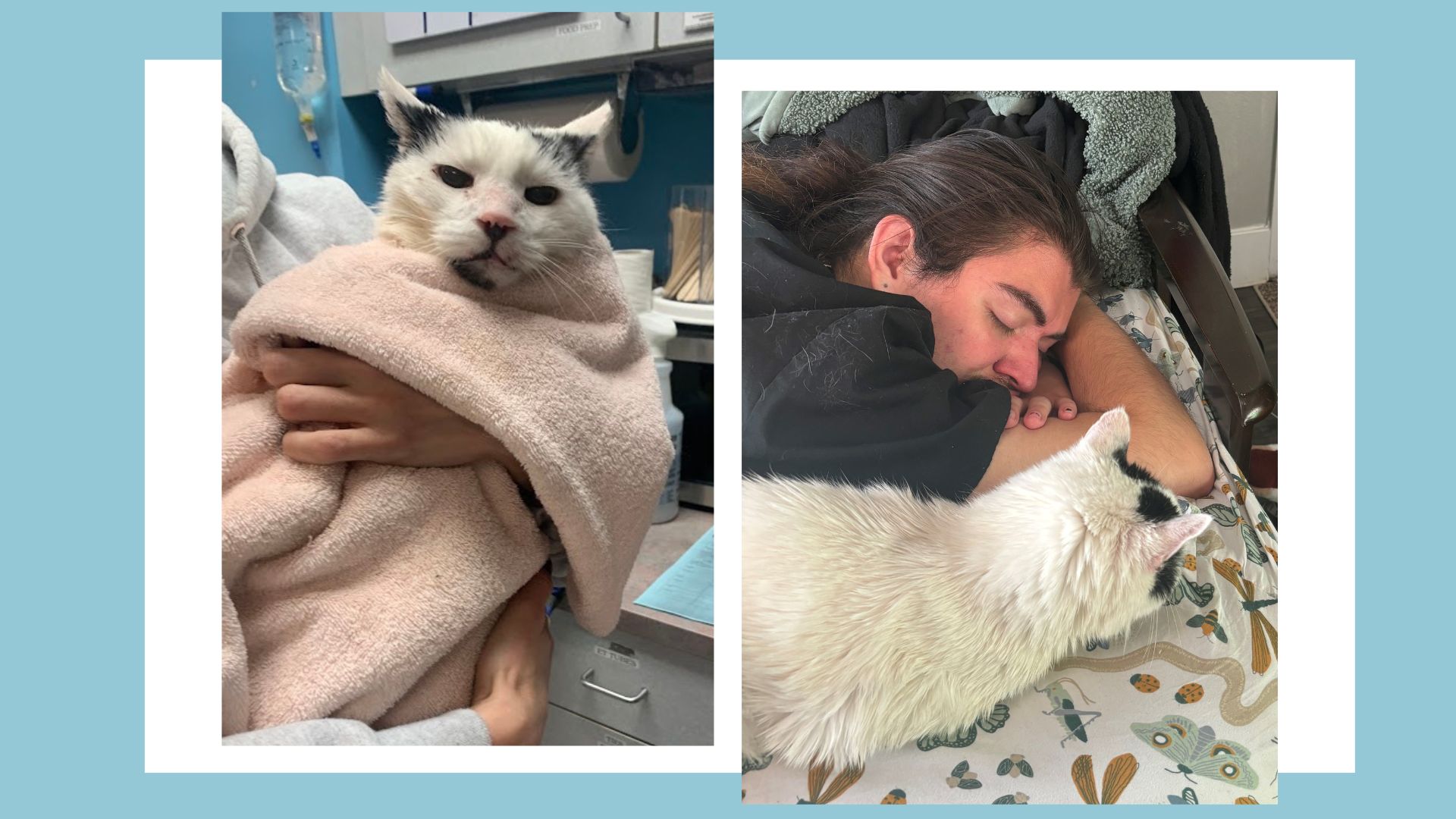

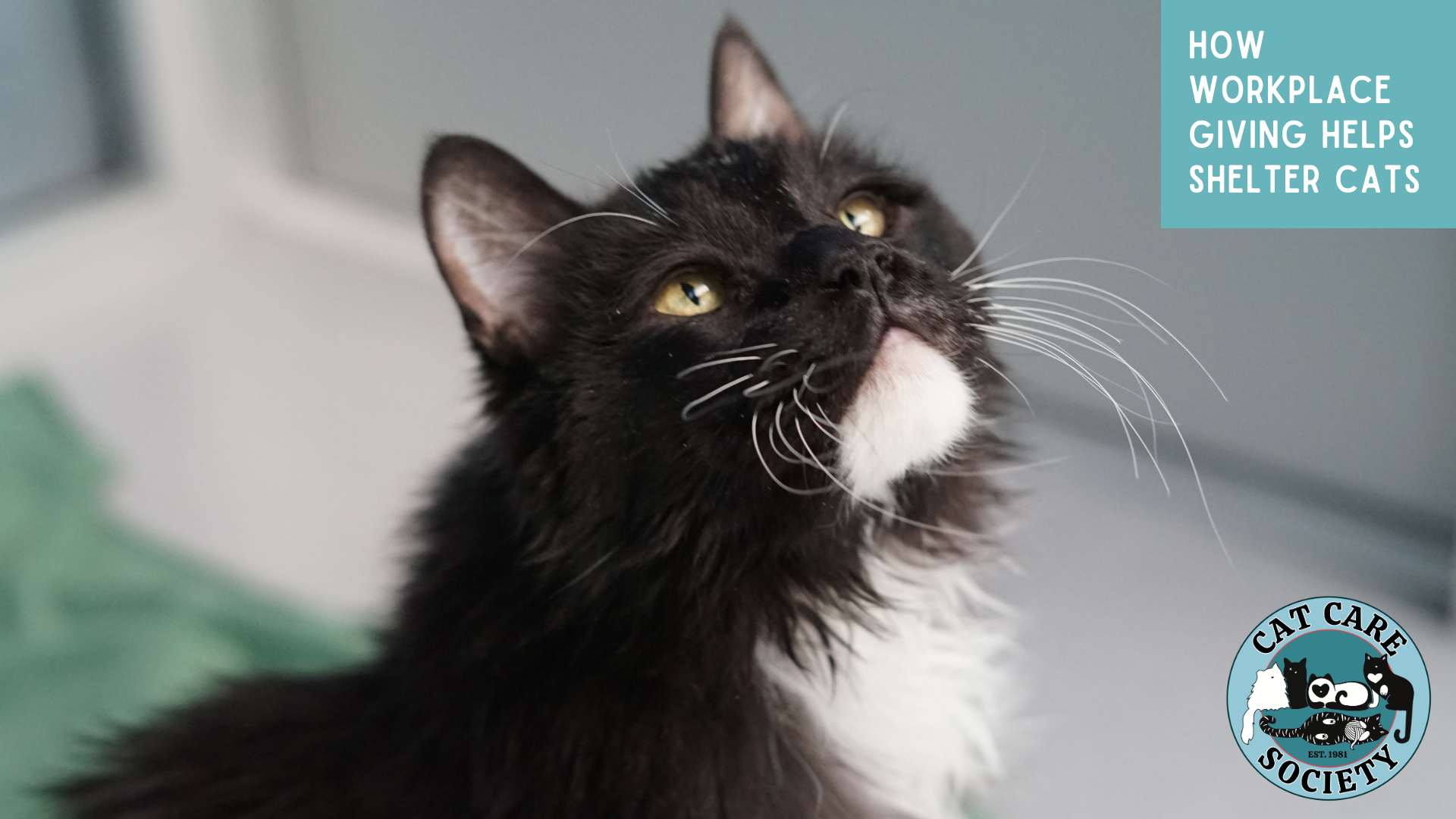
Please include your full name on a gift note when sending donations through Amazon or Chewy, so we can properly acknowledge your generous contribution! Without it, we won’t be able to identify that the items are from you. Also, please keep your shopping receipt, as it serves as your official donation receipt.
Copyright © 2024-2025 Cat Care Society. All Rights Reserved. | Privacy Policy
The Cat Care Society is a non-profit 501(c)(3) organization. Our tax identification number is 84-0869447.